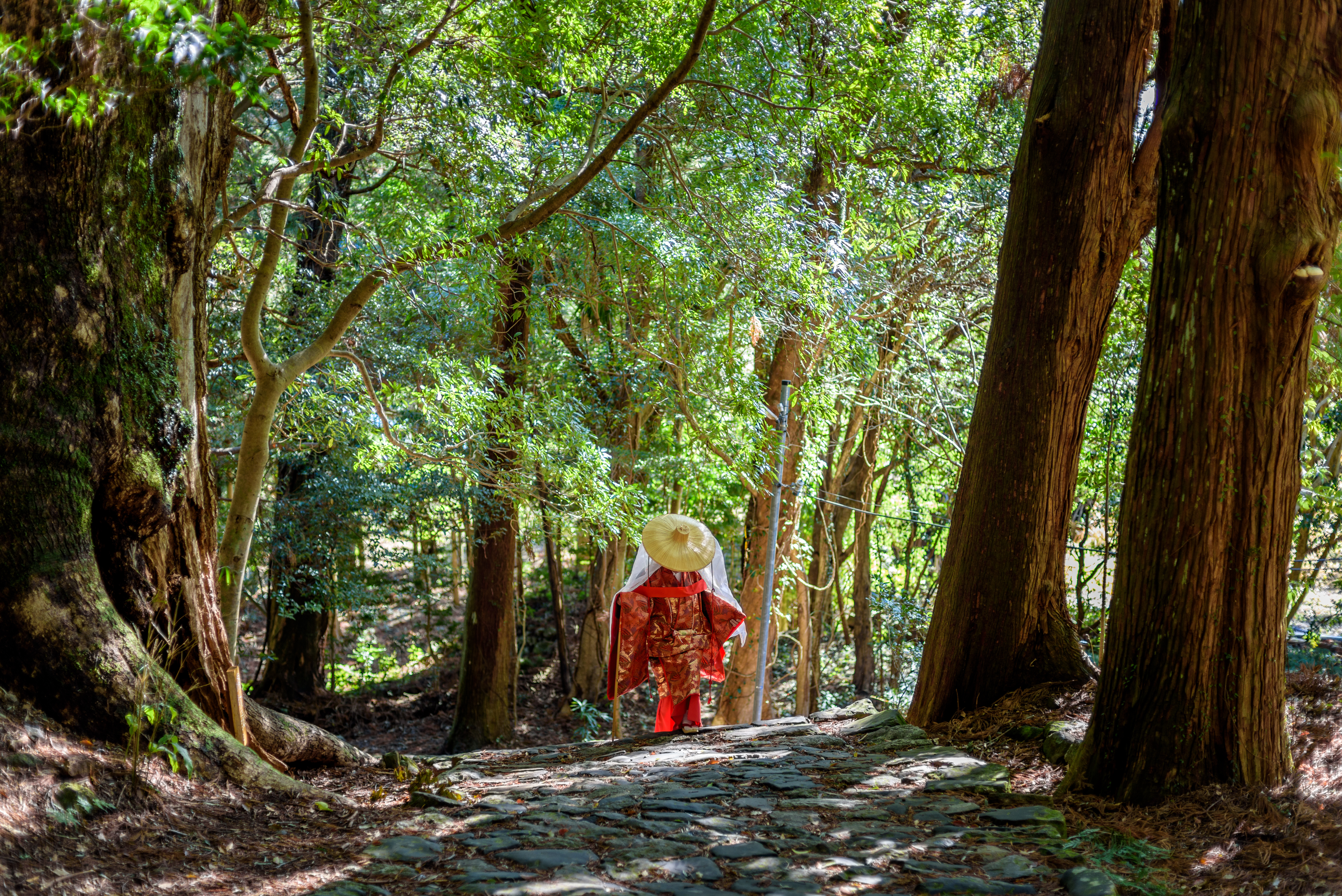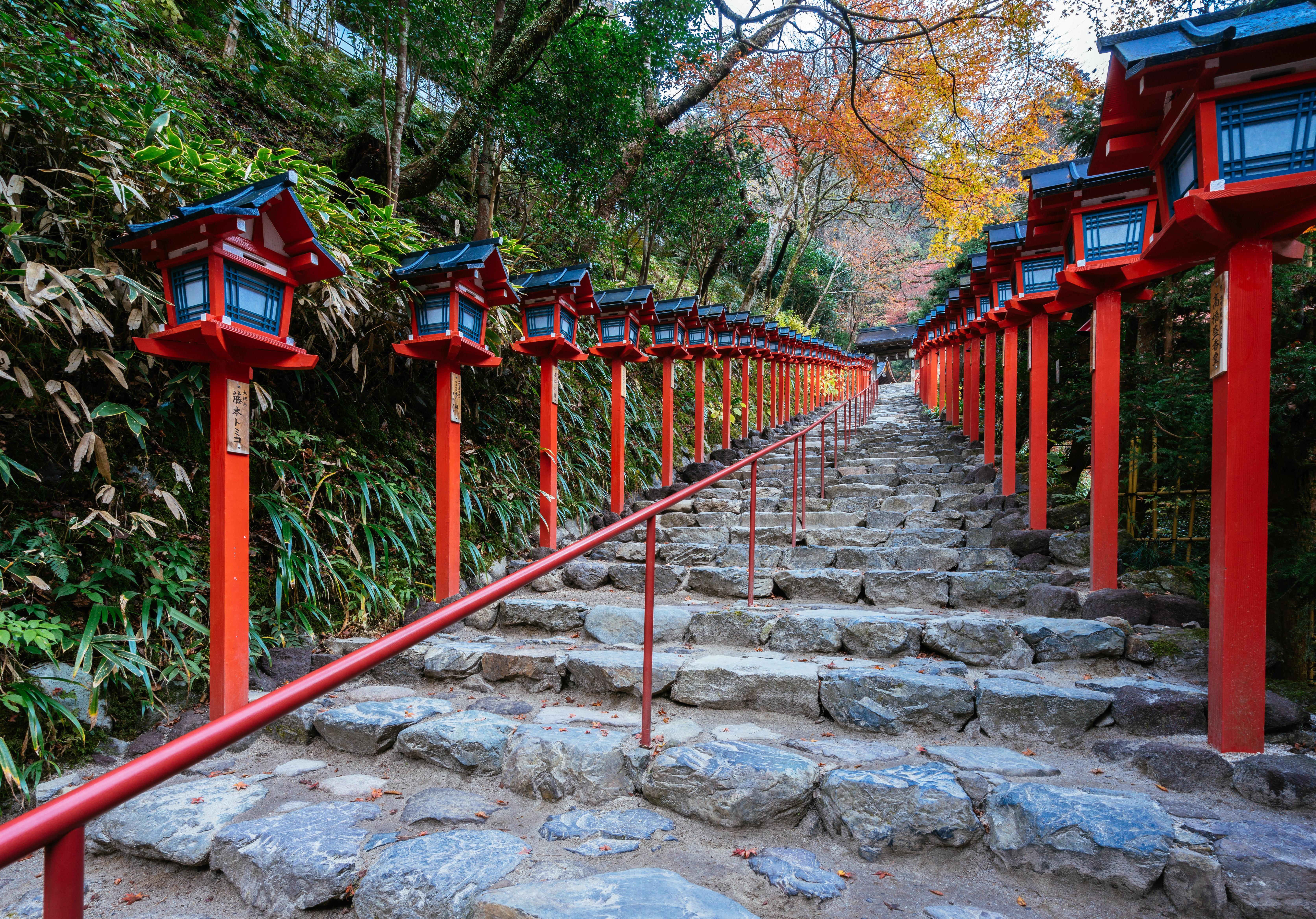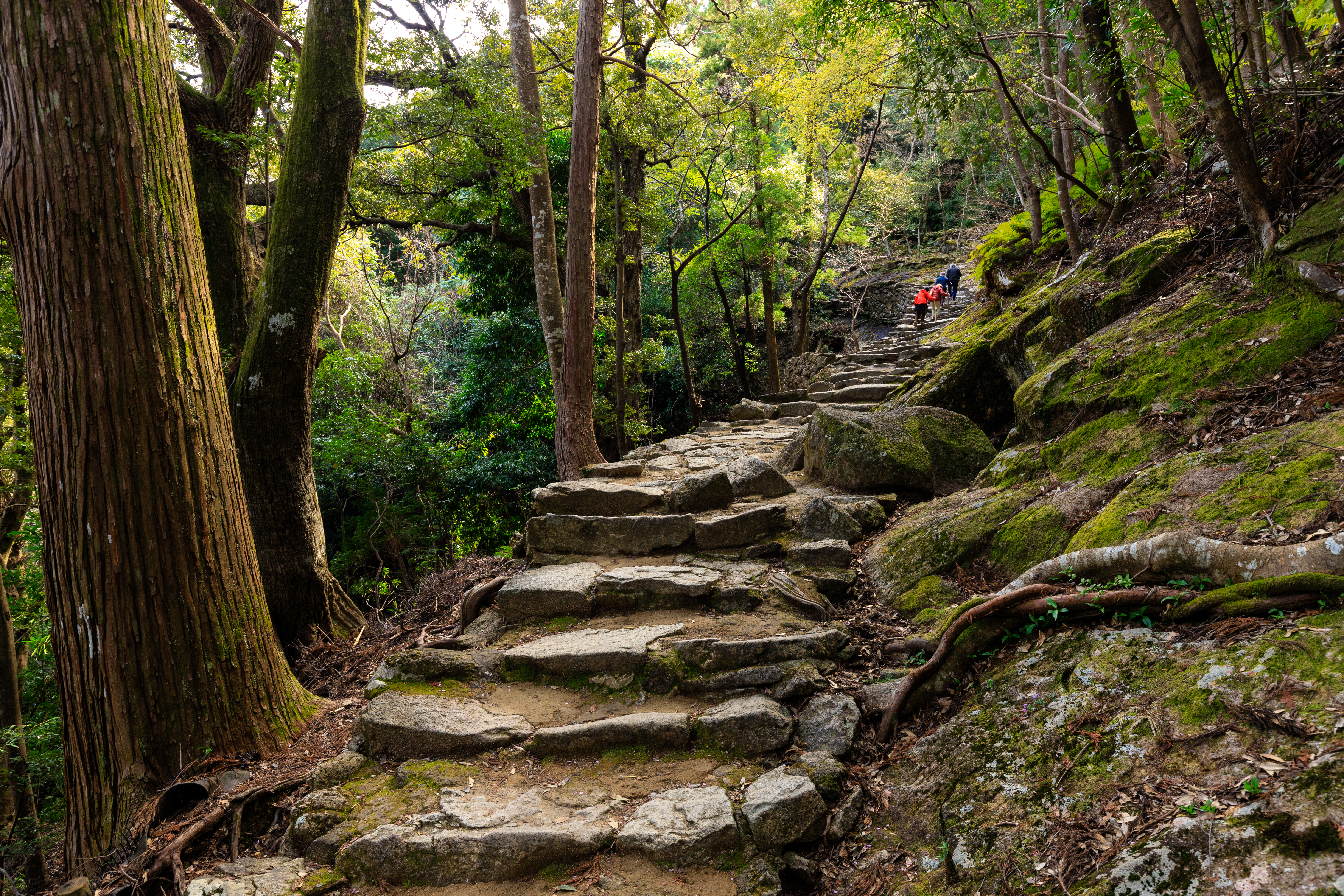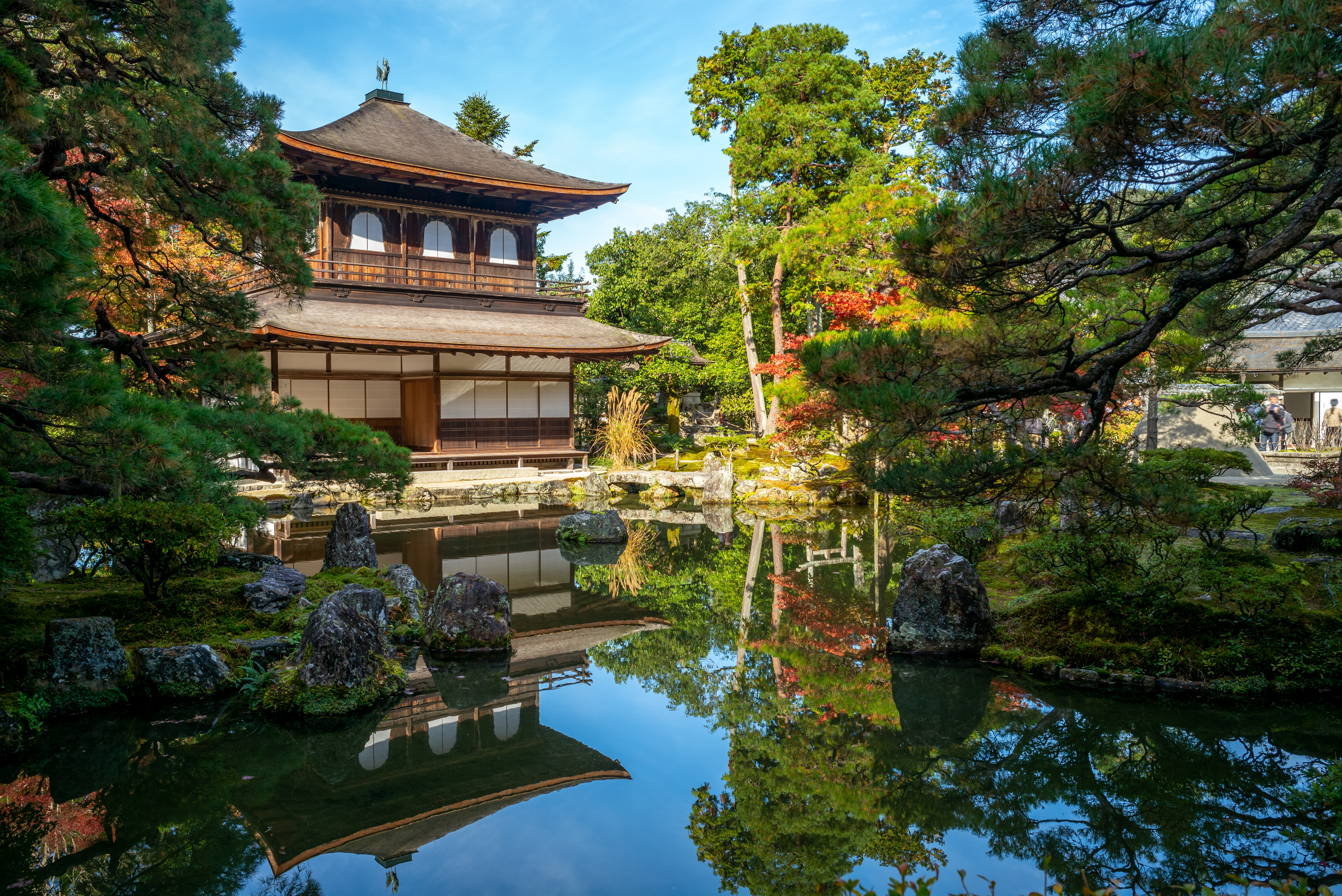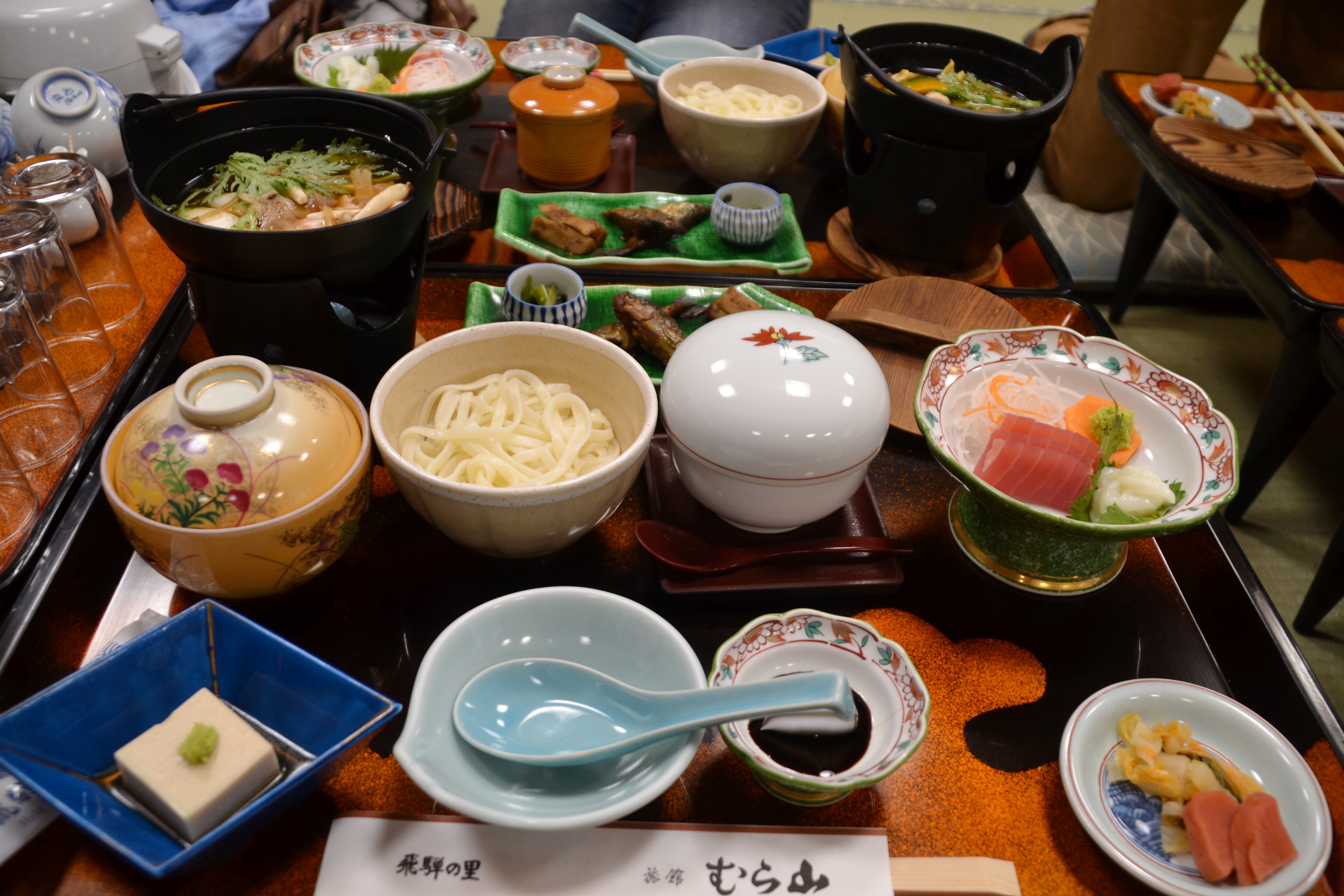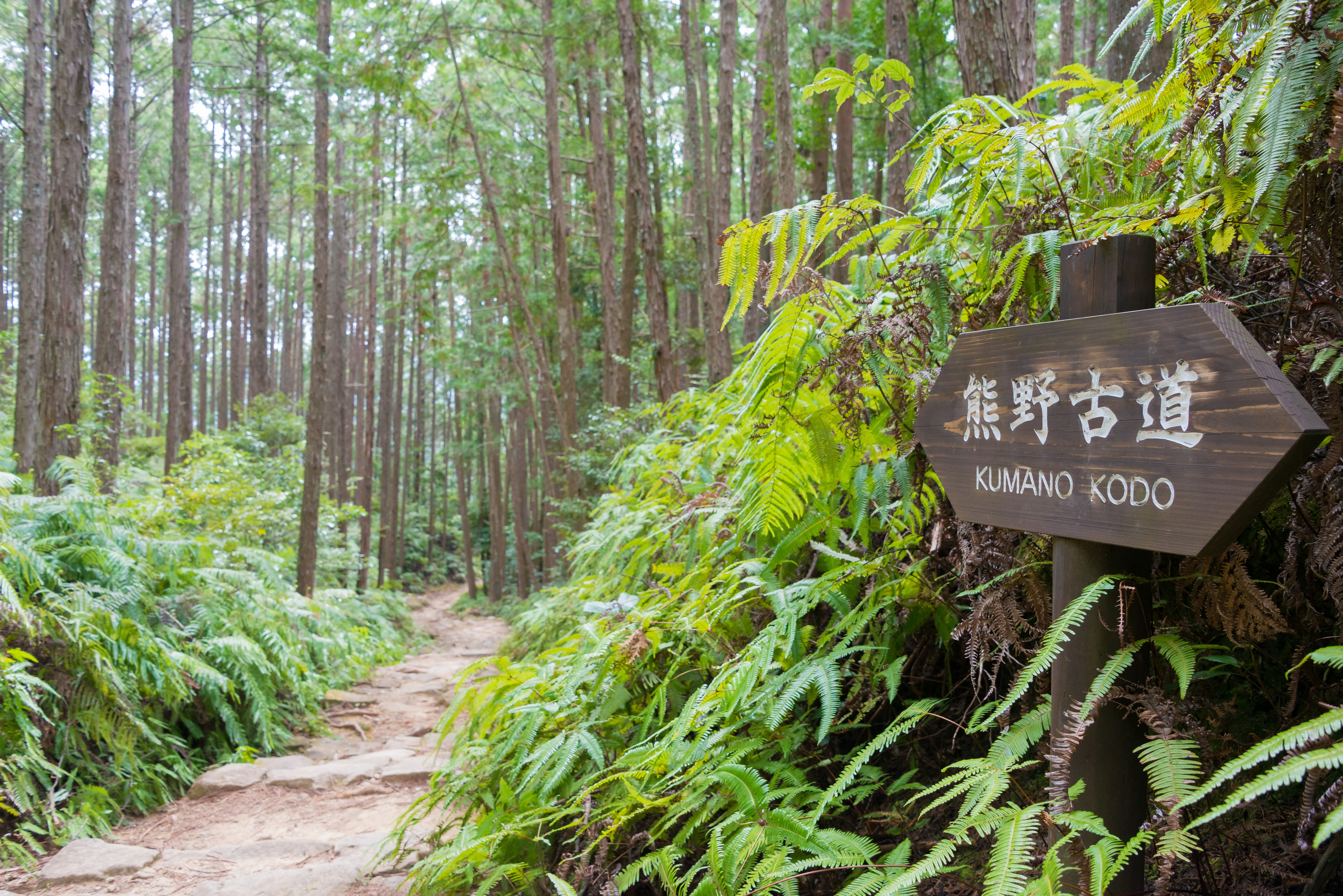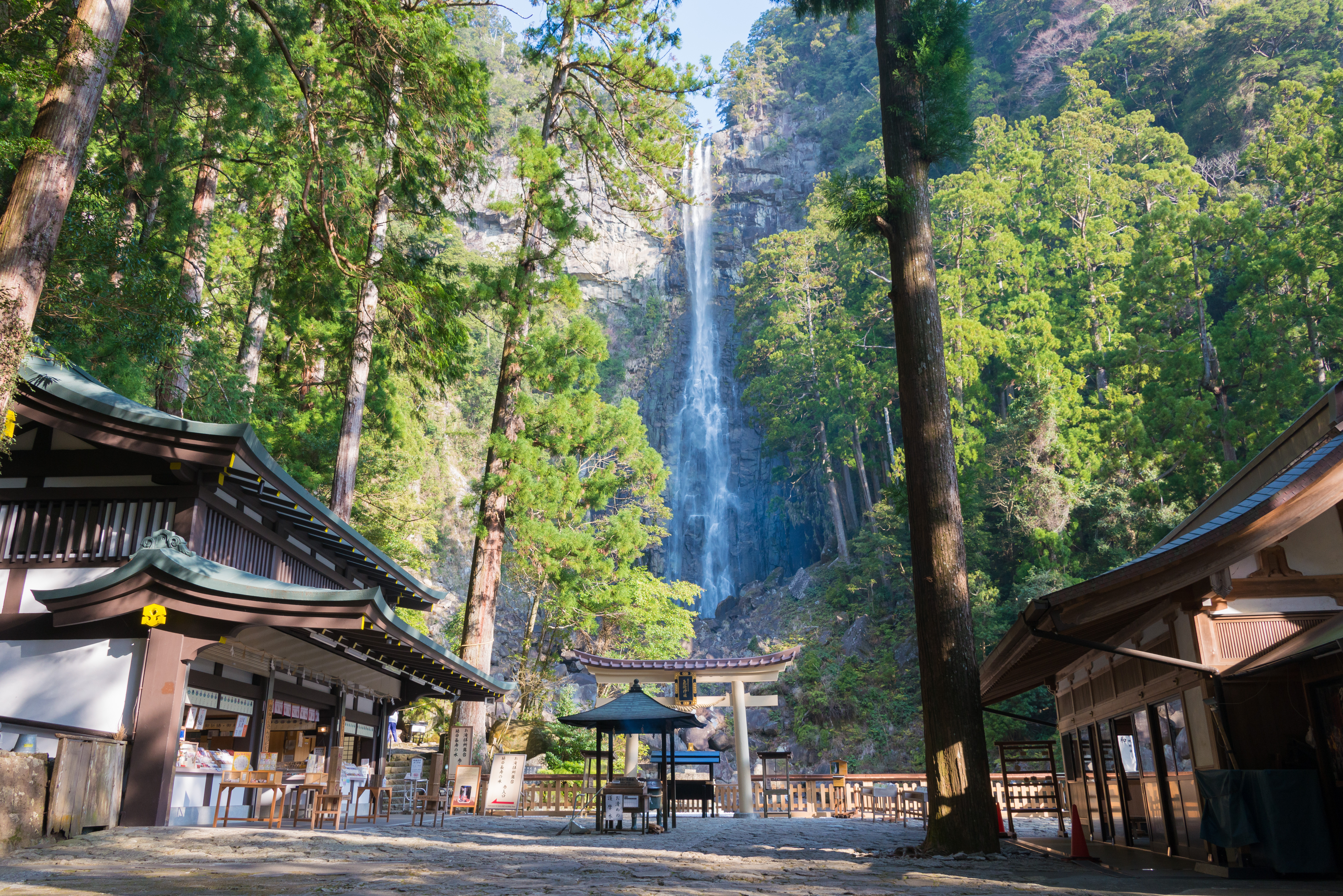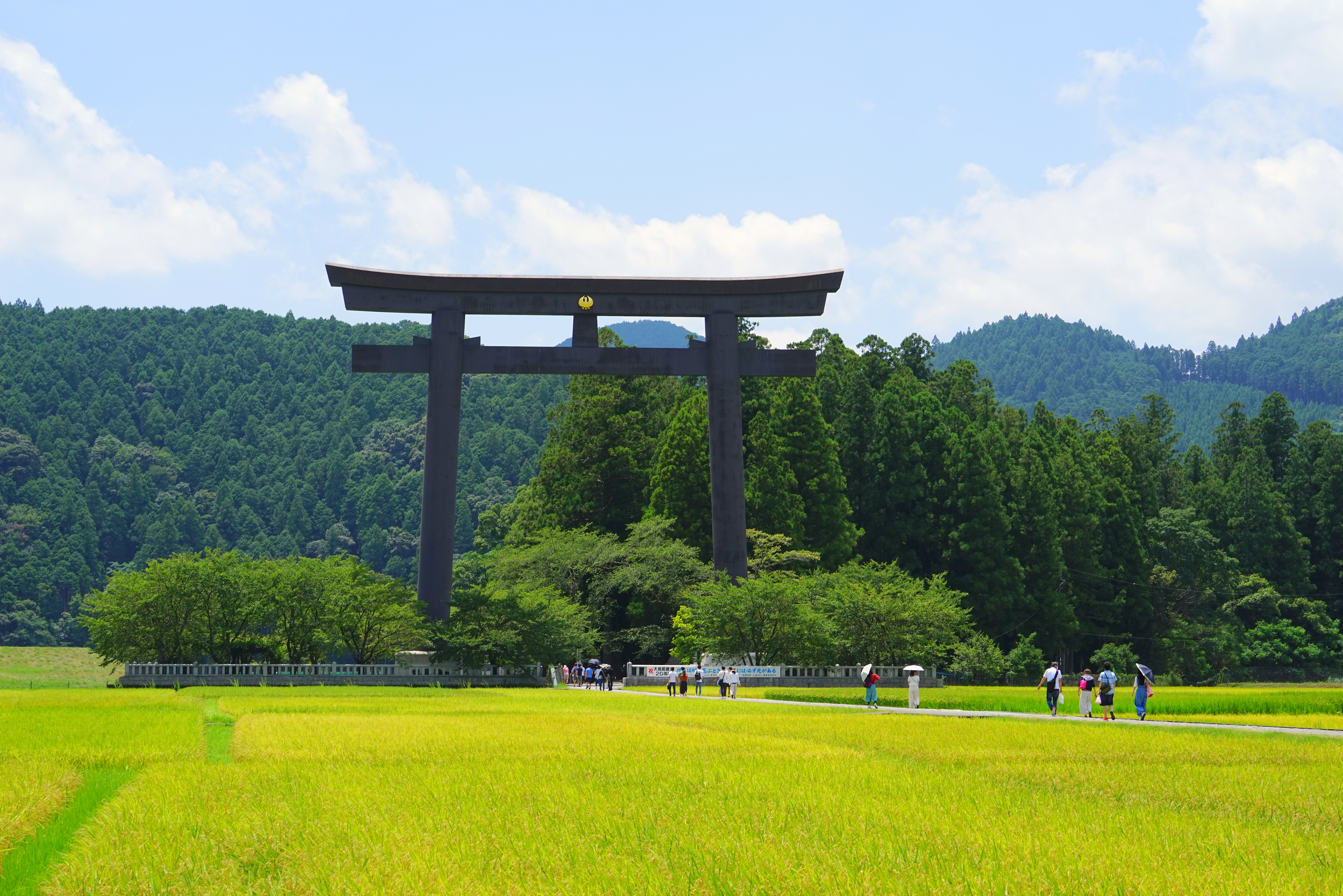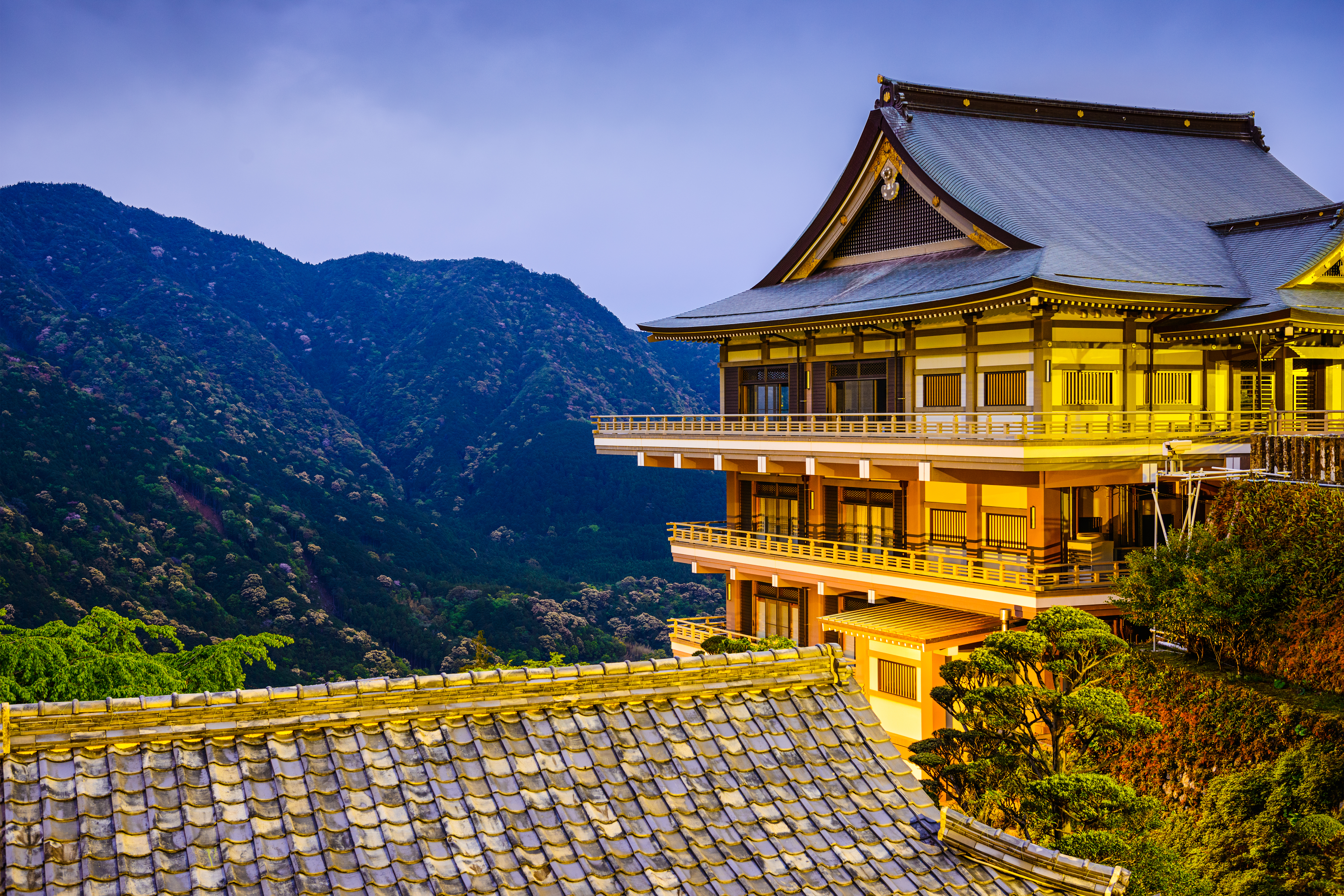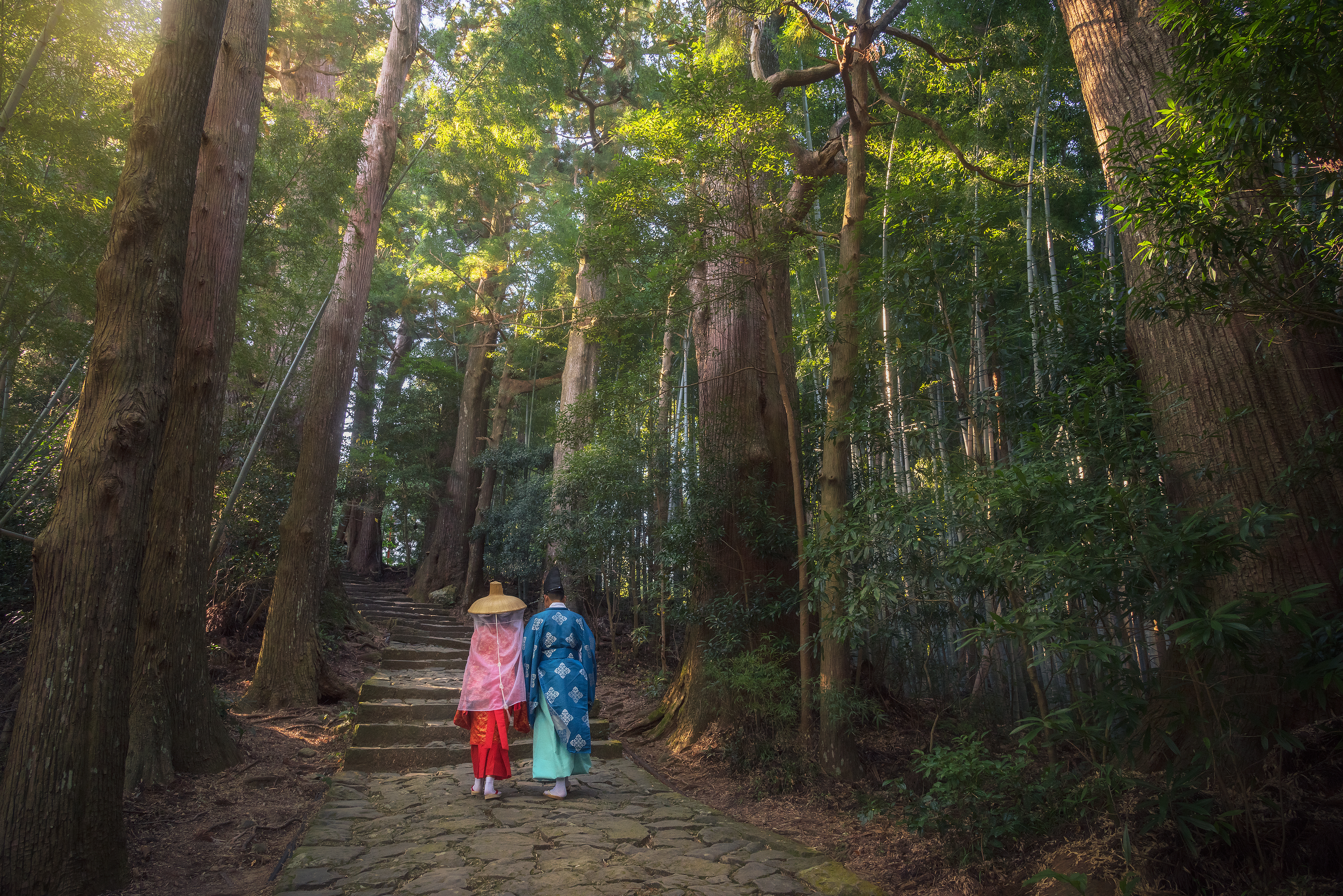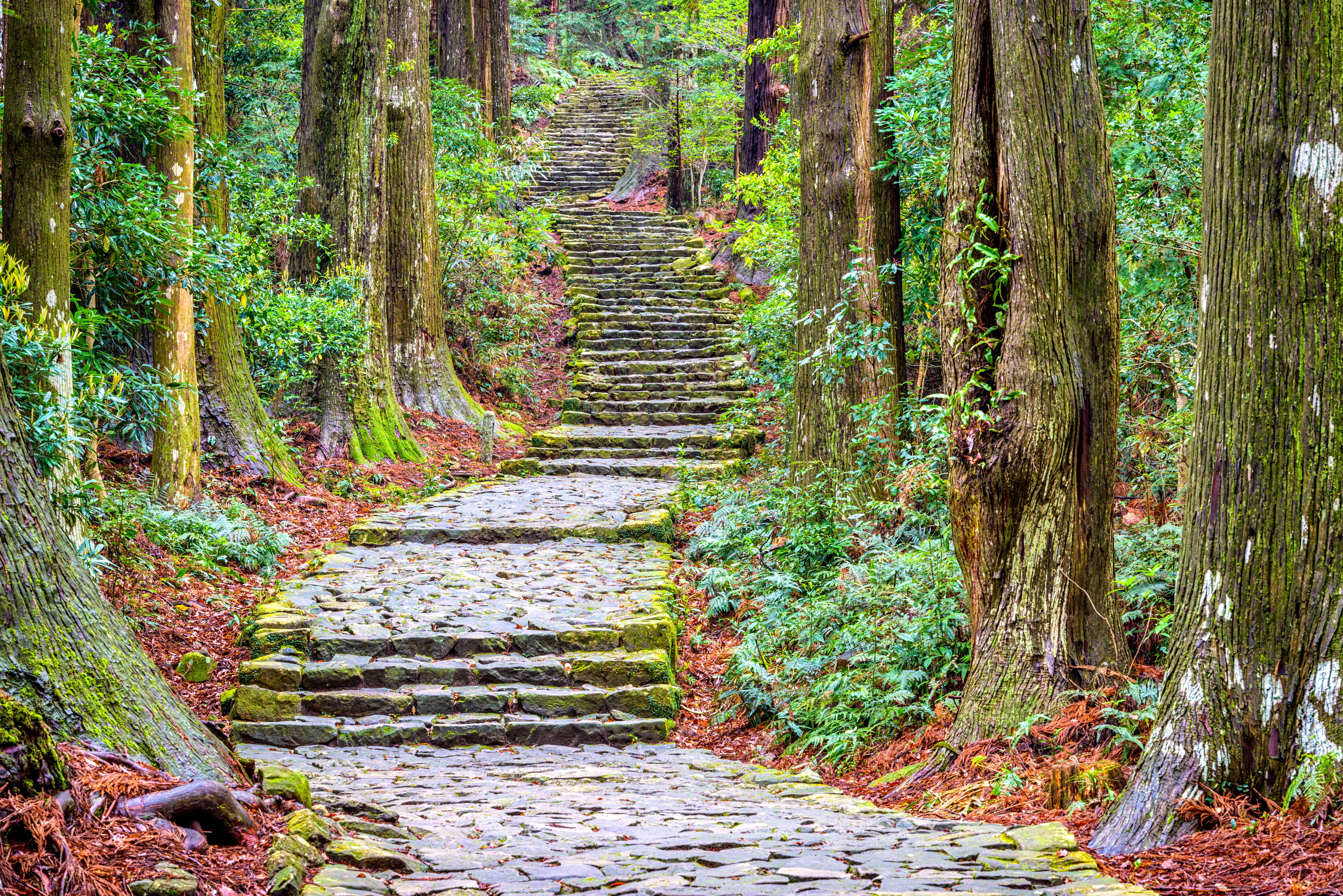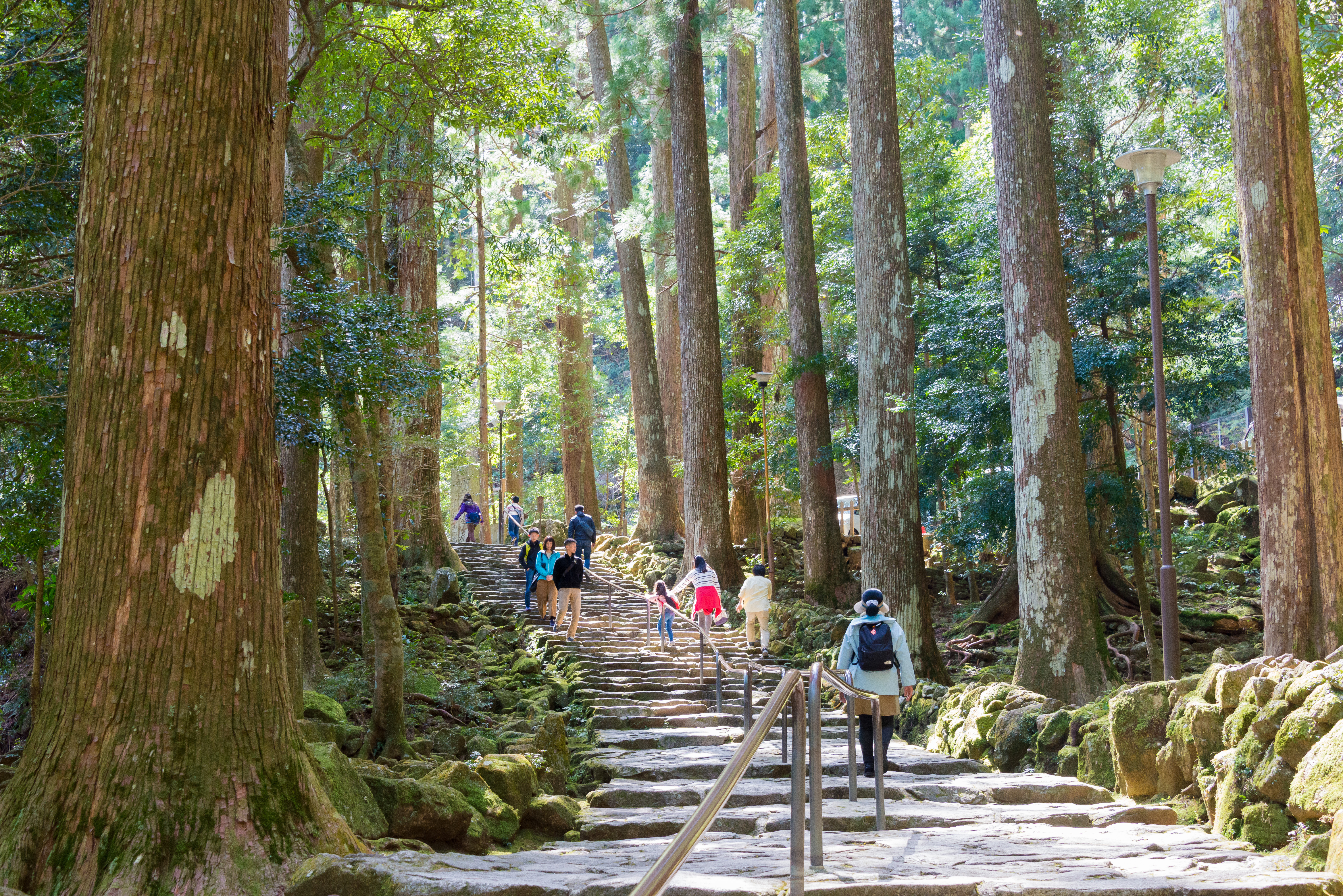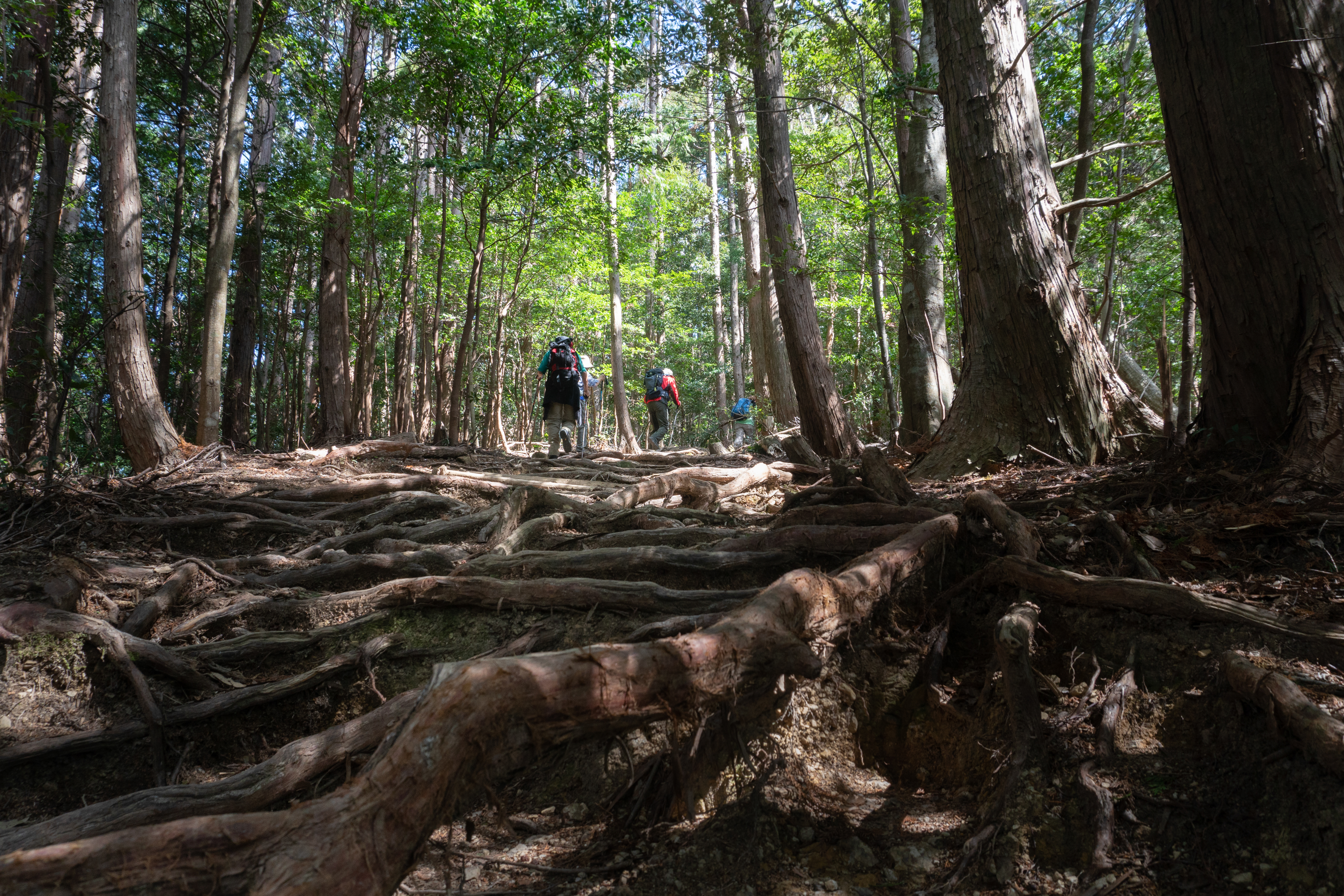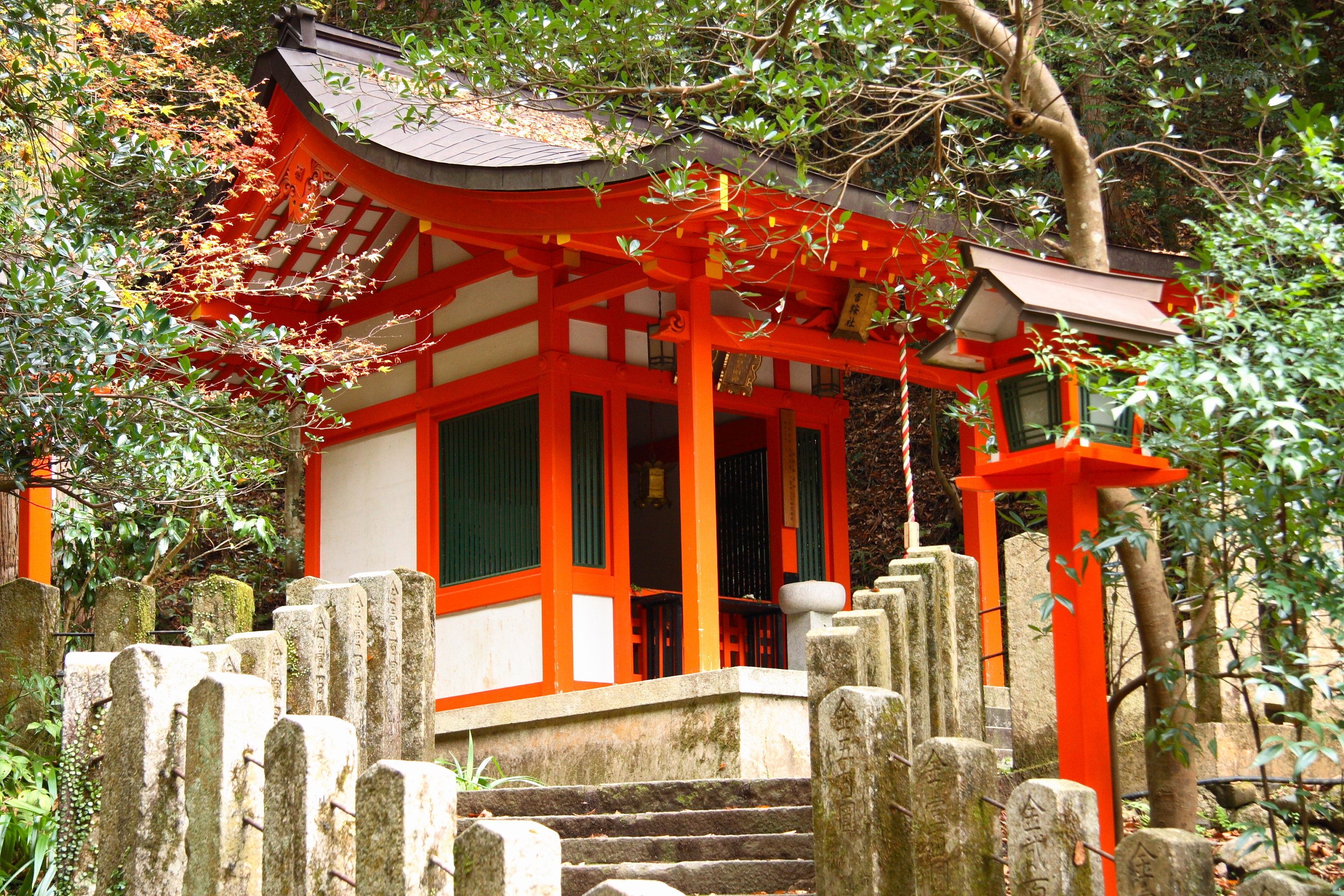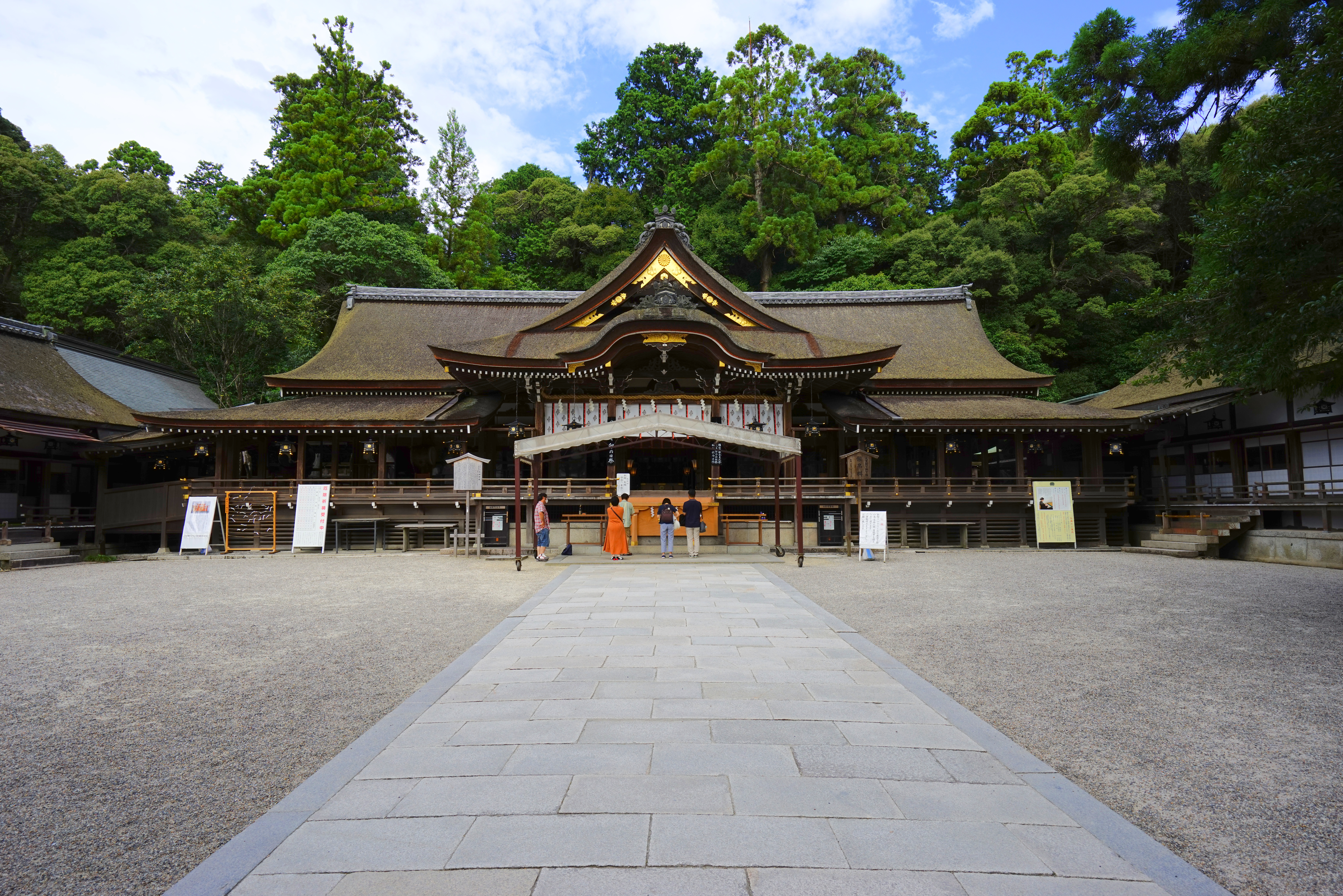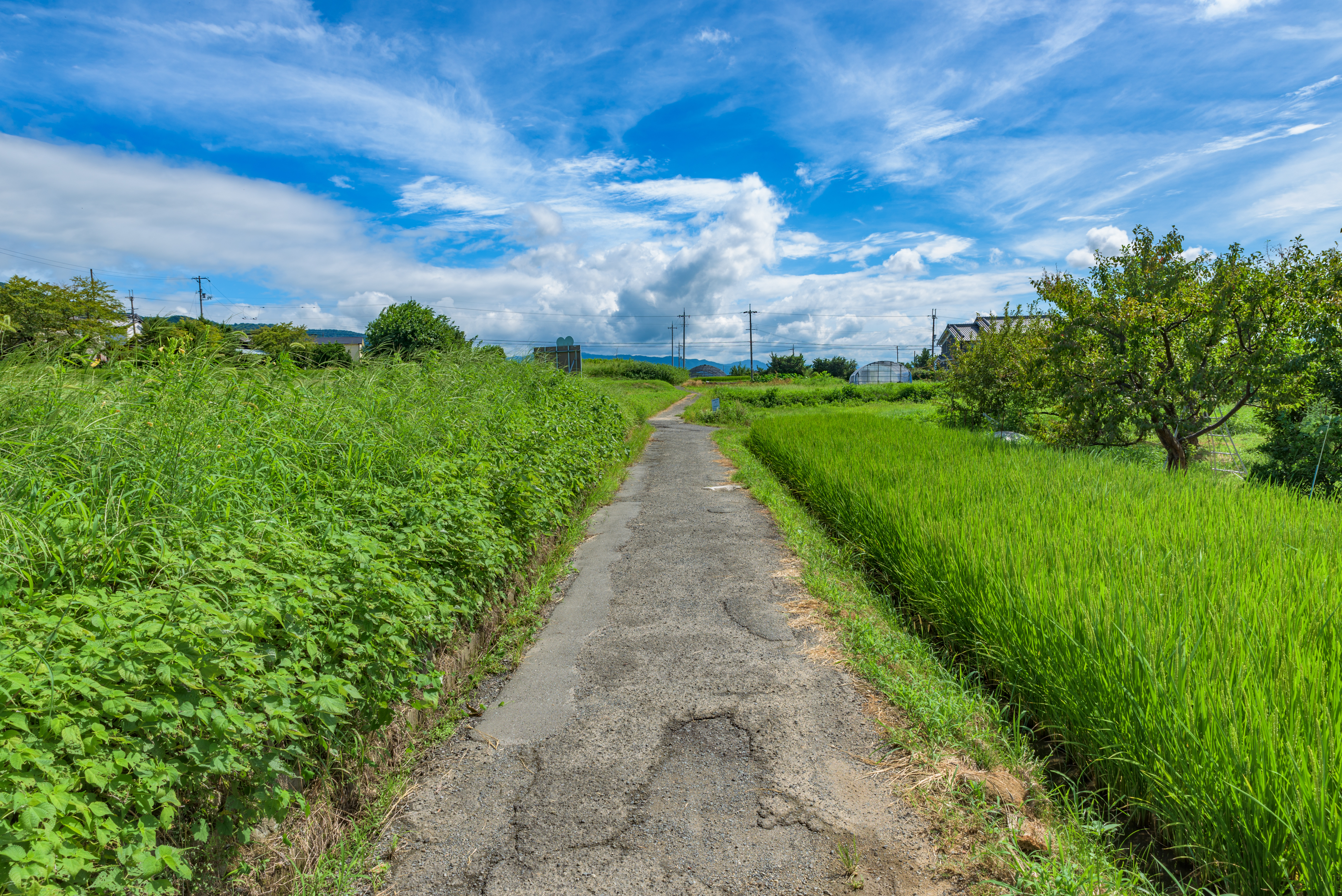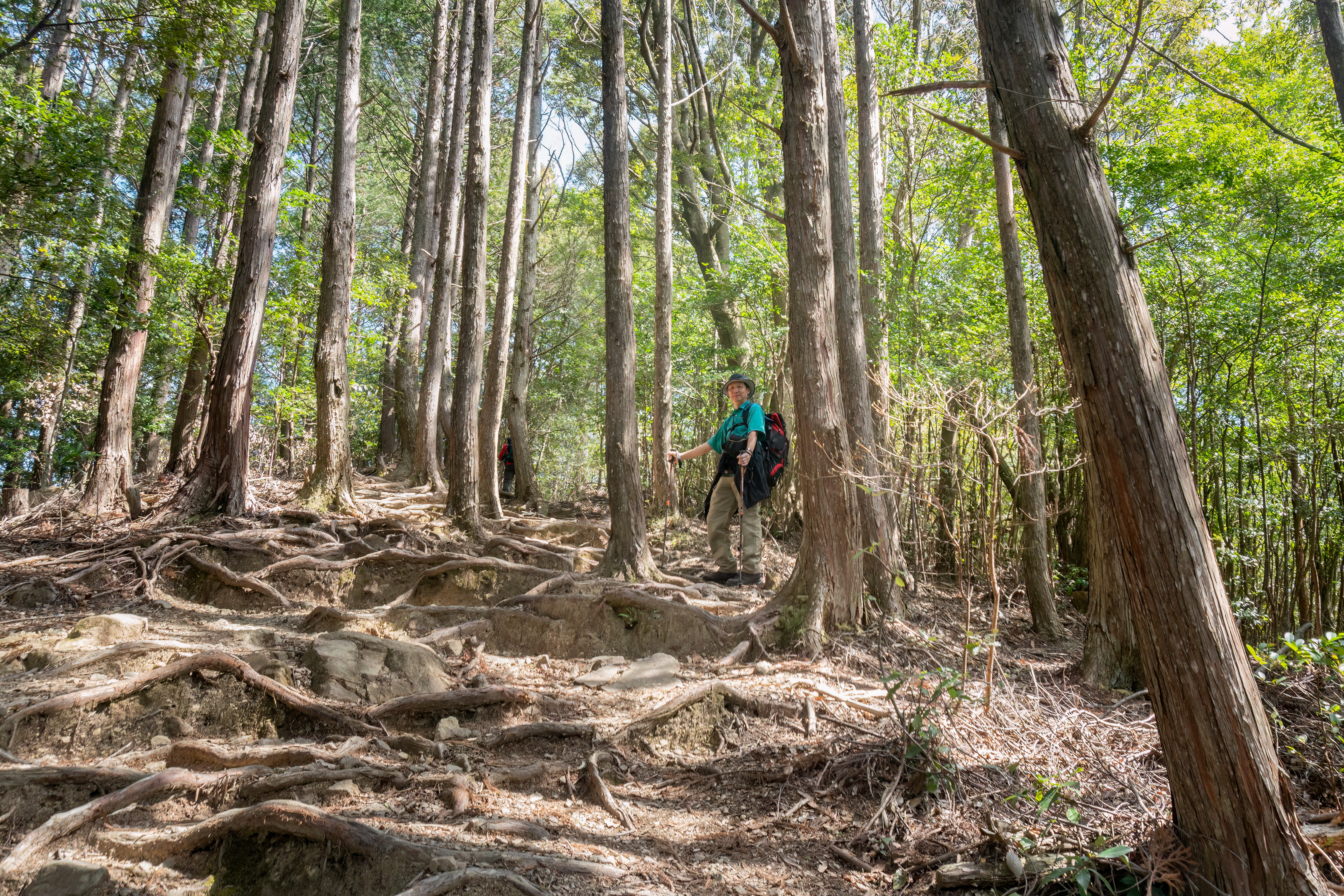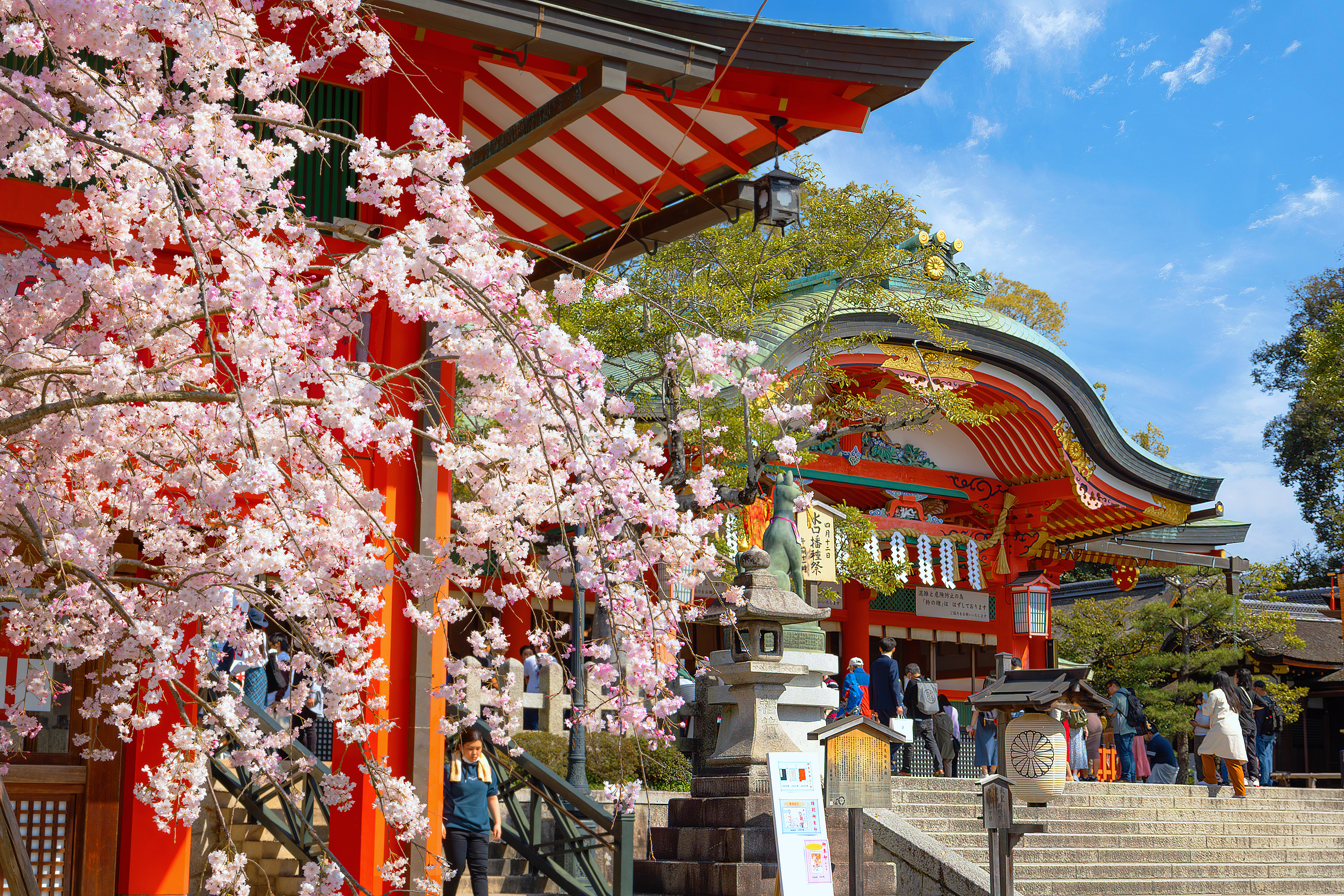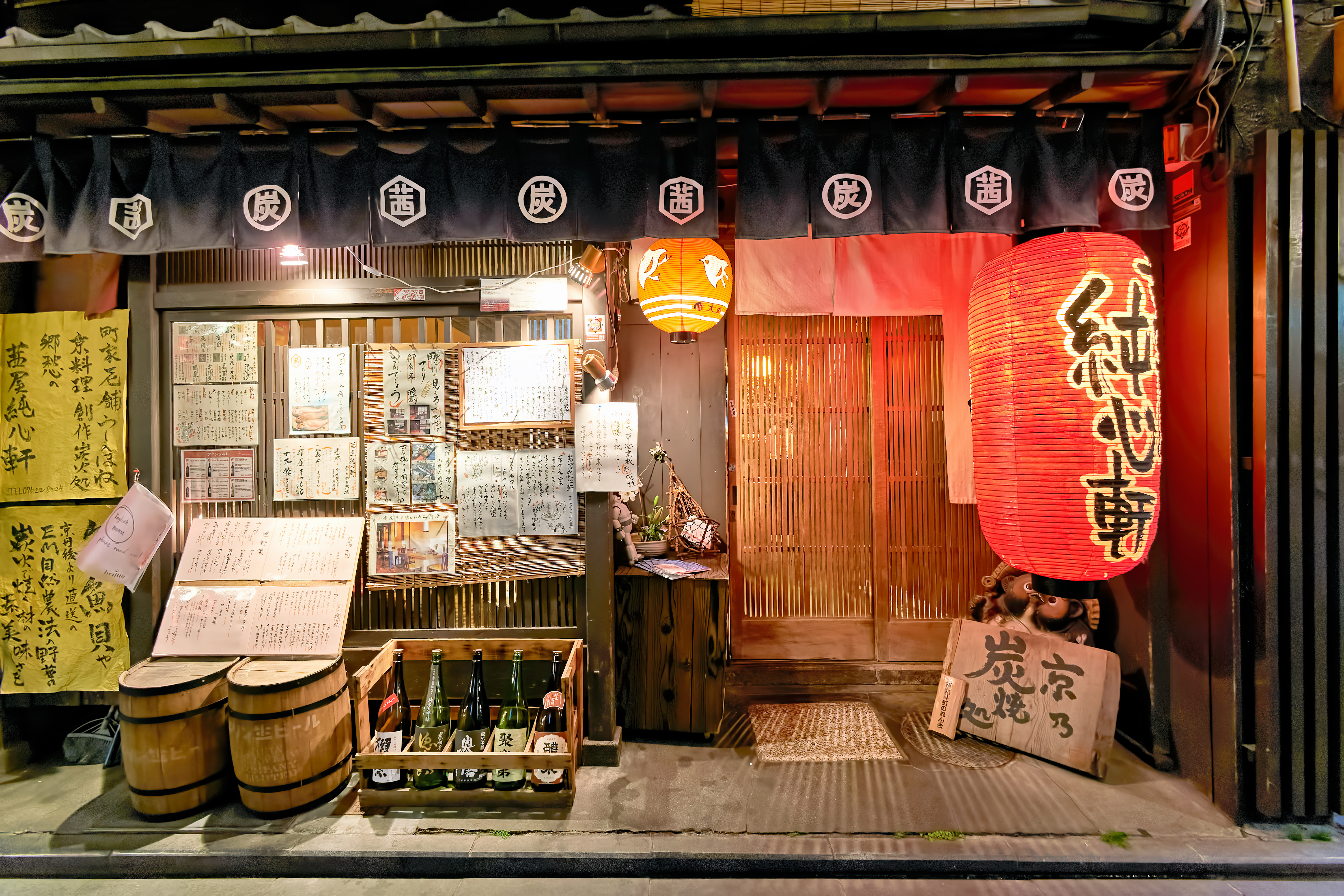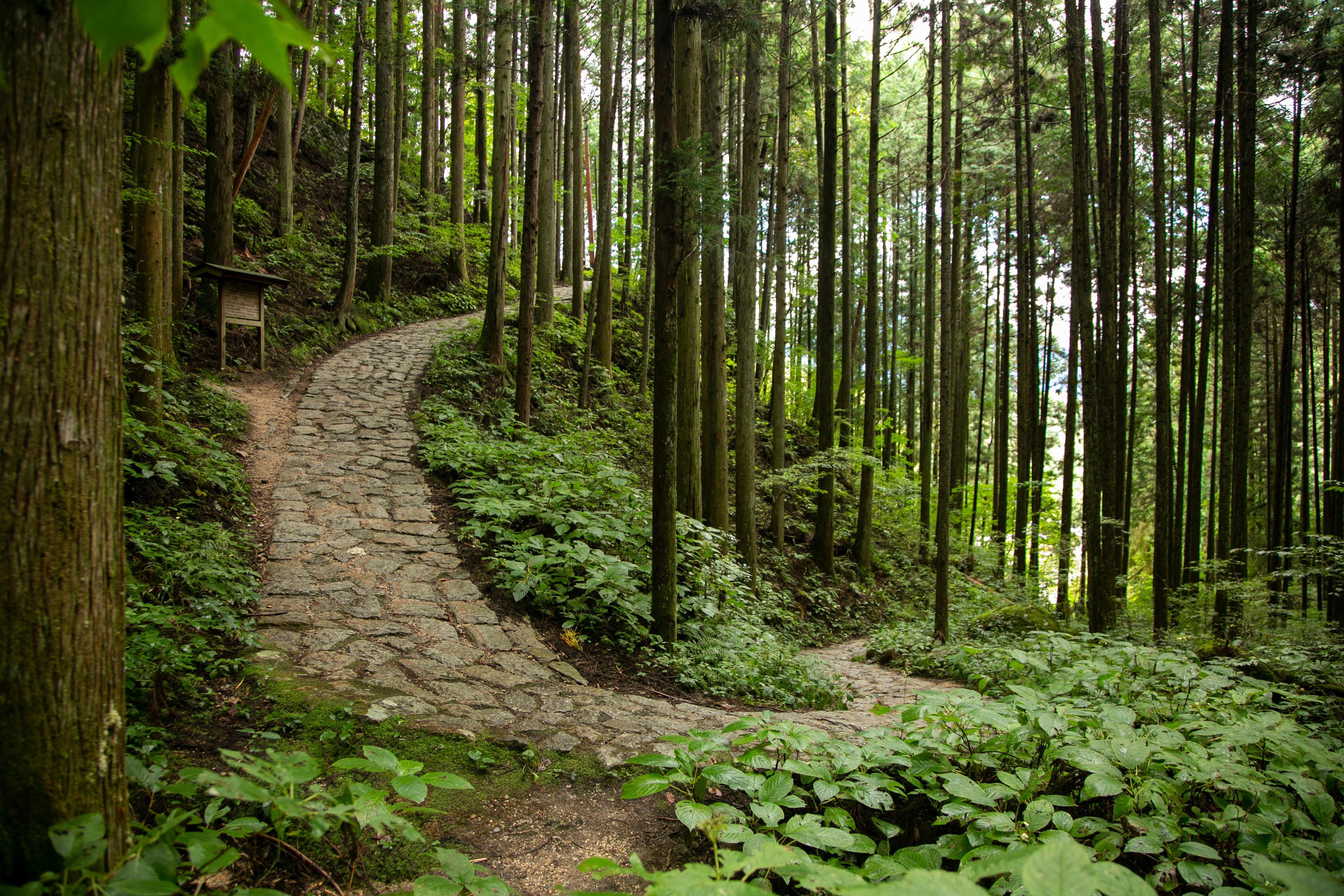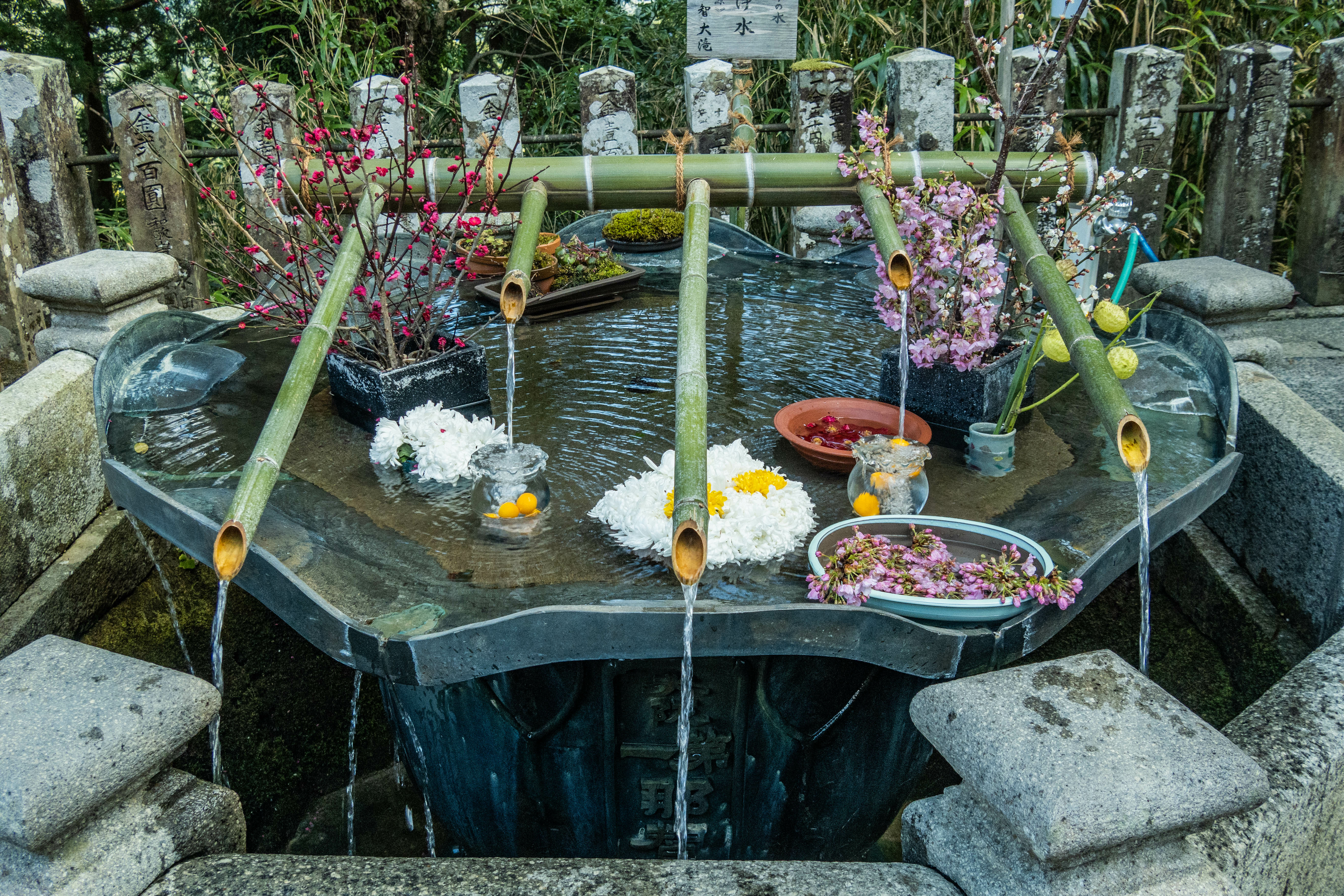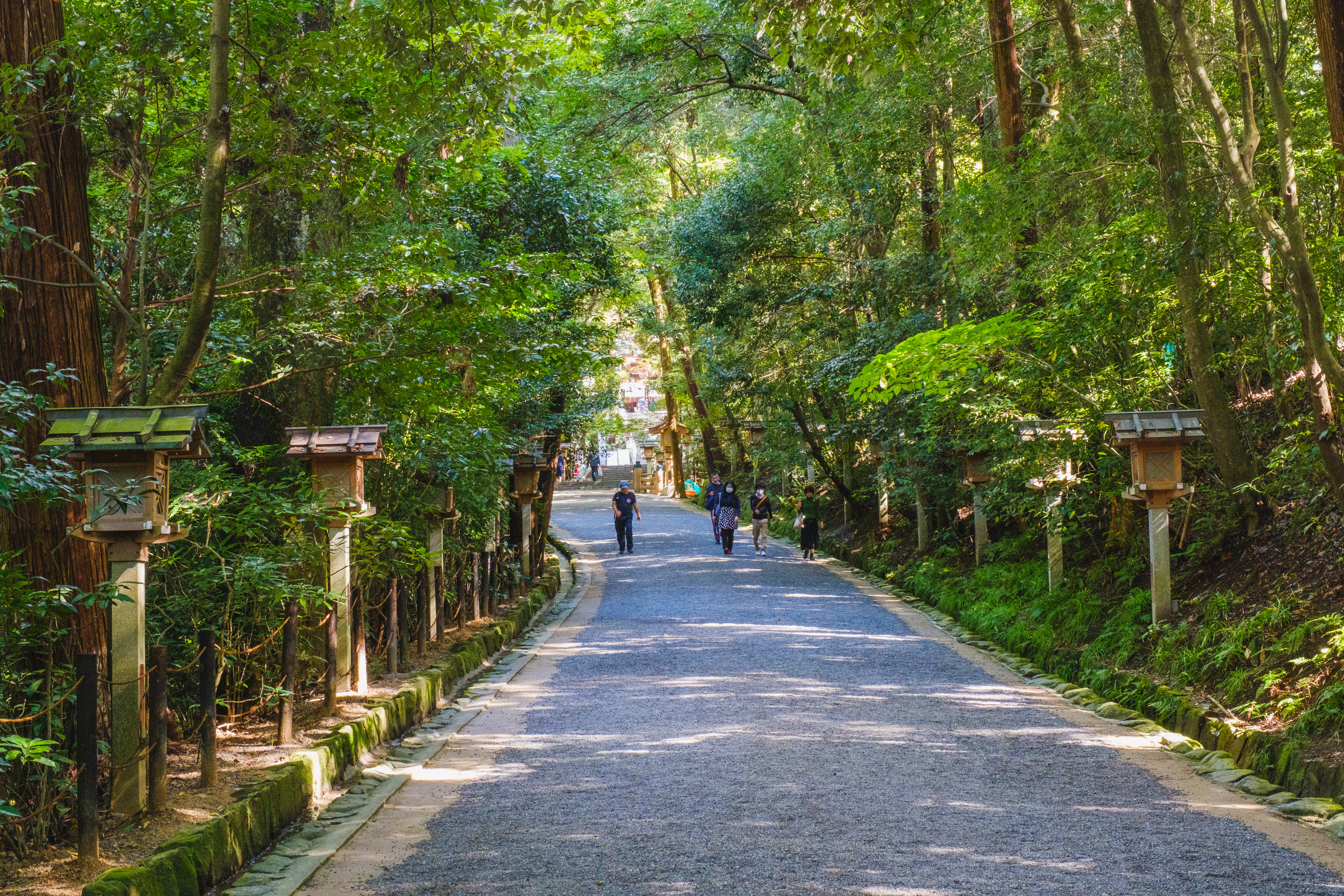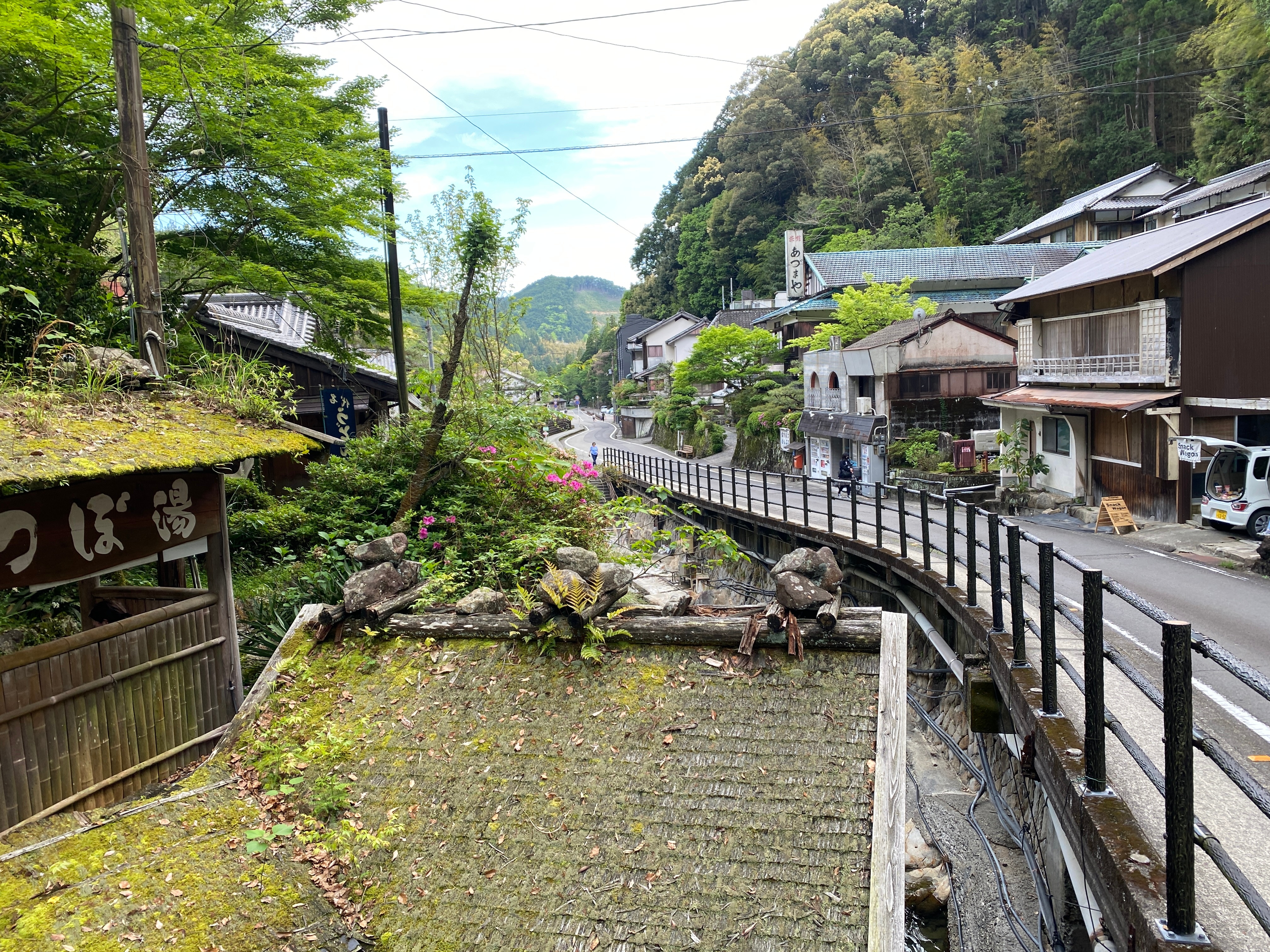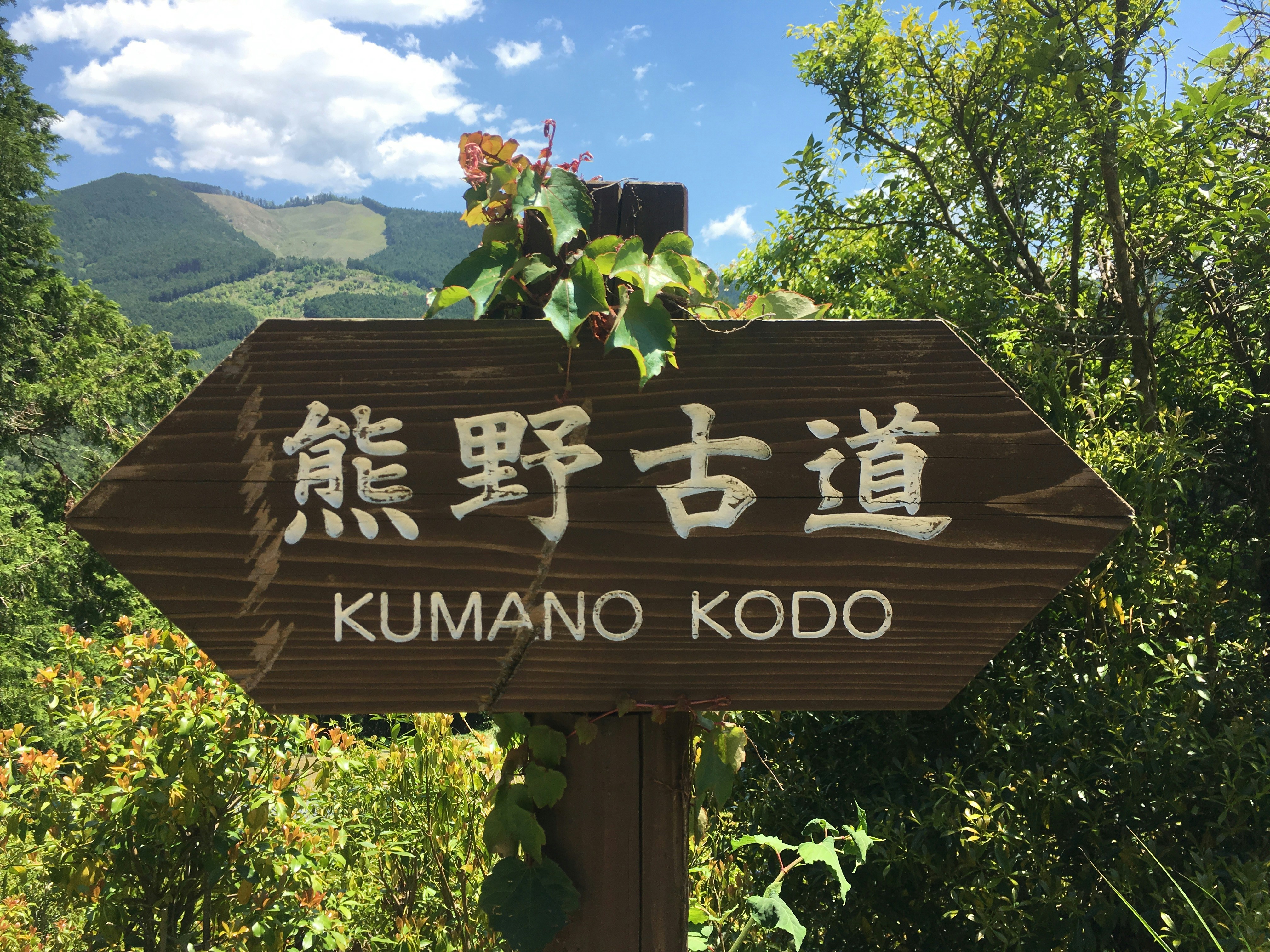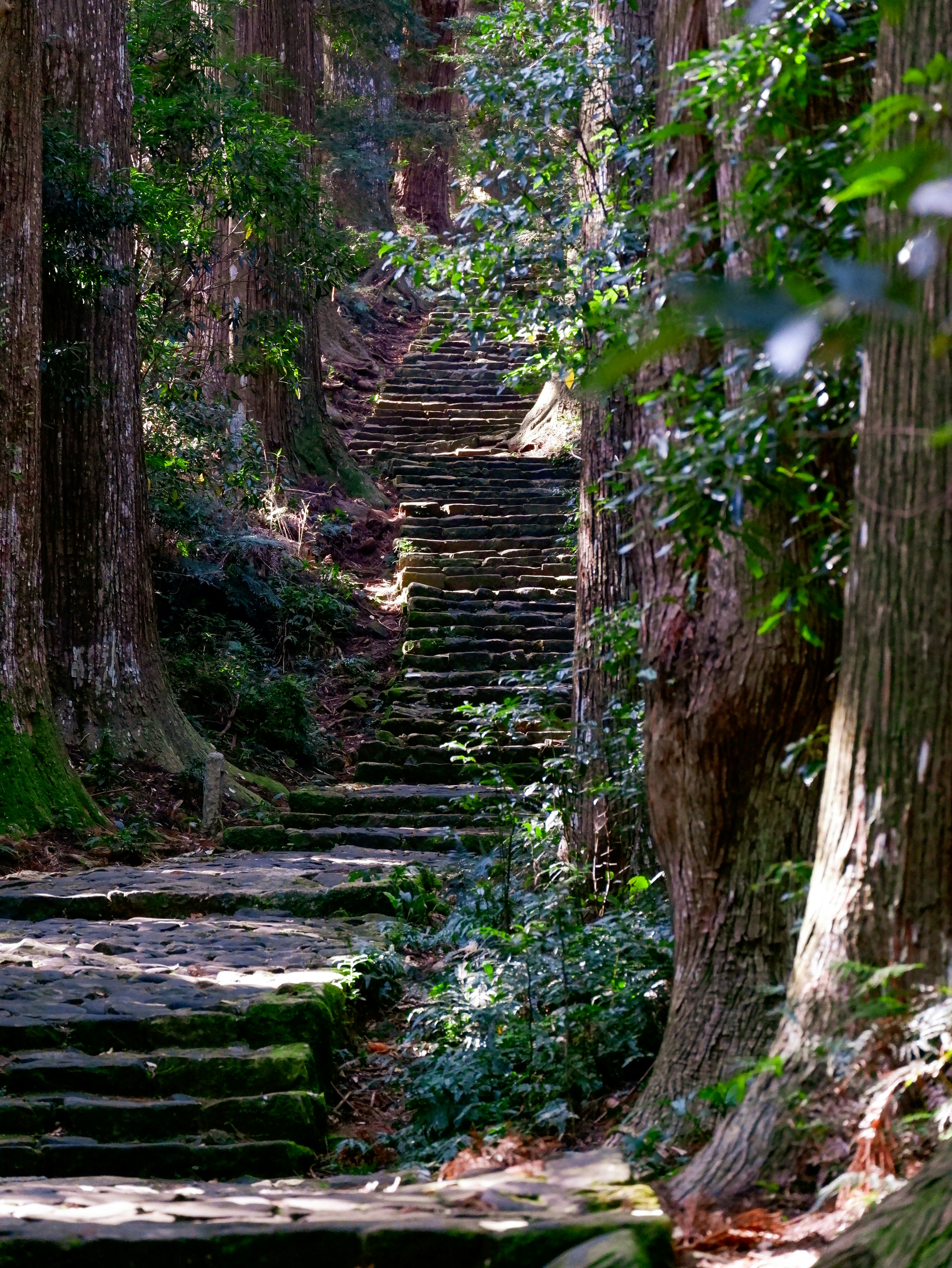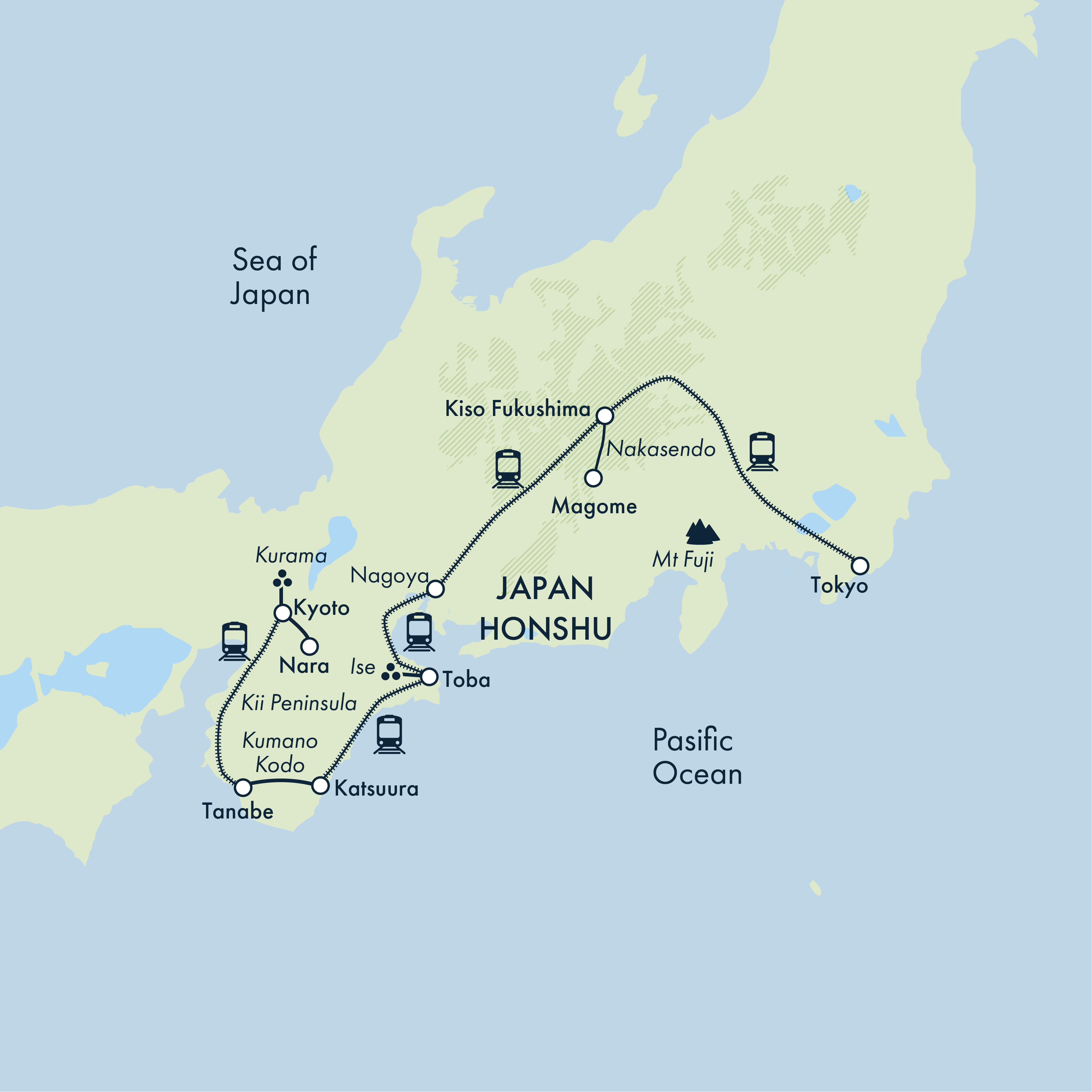Japan's Kumano Kodo
Japan's Kumano Kodo
$9000
Japan's Kumano Kodo
14 Days Starting in Kyoto, Japan and ending in Tokyo, Japan
Visiting: Kyoto, Kibune, Kurama, Nara, Tanabe, Kumano Kodo, Kumano Hongu Taisha, Yunomine Onsen, Wakayama, Nachi, Katsuura, Toba, Ise, Kiso Fukushima, Nagiso, Tsumago, Magome, Nakatsugawa, Tokyo
Tour operator:
Tour code:
TOQ
Guide Type:
Fully Guided
Group size:
6 - 14
Age range:
16-99
Special diets catered:
Please inform Exodus of specific dietary requirements
Tour operated in:
EnglishTrip Styles:
Interests:
Cultural, Gardens & Nature Tours, History, Religion and Spiritual
Tour Overview
Embark on an unforgettable journey through Japan's cultural heartland with the "Japan's Kumano Kodo" tour. This immersive experience begins in the enchanting city of Kyoto, where you'll explore its rich heritage of temples and gardens. Venture off the beaten path to walk the historic Kumano Kodo pilgrimage routes, a UNESCO World Heritage site, and the ancient Nakasendo Way. Discover the serene beauty of the Kii Peninsula, the spiritual allure of Kumano Hongu Taisha, and the breathtaking Nachi Falls. Experience authentic Japanese culture by staying in traditional ryokans and savoring exquisite local cuisine. Learn about the fascinating pearl-collecting Ama Divers in Toba and enjoy the scenic landscapes of Kiso Fukushima. Conclude your adventure in the vibrant metropolis of Tokyo, where modernity meets tradition. This small group tour offers a unique blend of cultural, historical, and spiritual exploration, perfect for those seeking an authentic Japanese experience.
Highlights
Itinerary
Day 1 : Start Kyoto
Location: Kyoto
Accommodation Name: Dormy Inn Premium Kyoto Ekimae (or similar)
With about 2,000 temples, shrines and gardens, Kyoto is a treasure house of Japan’s cultural heritage and remains one of the most fascinating cities in Asia. Unlike many other Japanese cities, it escaped the ravages of both the Second World War and modern urban development, keeping intact much of the spirit and architecture of traditional Japan.You are free to arrive at the start hotel anytime today during the day. This evening, there is a briefing with your leader.Accommodation: Dormy Inn Premium Kyoto Ekimae (or similar)
Day 2 : Hike to the Kibune shrine; onto Kurama temple; return to Kyoto
Location: Kyoto, Kibune, Kurama, Kyoto
Accommodation Name: Dormy Inn Premium Kyoto Ekimae (or similar)
Meals Included: Breakfast
This morning, we set out on our first hike, visiting the northern mountains and the Kibune shrine, followed by the Kurama temple. Our first stop, however, is the Ginkakuji (Silver Pavilion). From here, we climb up to the Daimonji mountain for an excellent view of Kyoto, then take a short train ride north to Kibune-guchi, where the hike to Kibune and Kifune shrine begins.Kifune shrine was built upon the site where supposedly a goddess finished a long journey by boat. It’s dedicated to the deity of water and rain, so all those who seek protection and maritime safety come here to pray – especially seamen and fishermen. The charming town of Kibune is dotted with traditional restaurants and inns, with streams running beneath the restaurant platforms. It’s an excellent opportunity to relax, especially for those who wish to escape the Kyoto crowds.We then set out for Kurama town, renowned for its Kurama temple and special hot springs. The temple is deep in the woods and requires a fair bit of legwork to reach, but those who do venture there are rewarded with beautiful scenery along the path.We return to Kyoto for the evening, where you can choose to join an optional group dinner in the Gion district if you wish.Accommodation: Dormy Inn Premium Kyoto Ekimae (or similar)
Day 3 : Walk on the ancient Yamanobe-no-michi
Location: Nara, Kyoto
Accommodation Name: Dormy Inn Premium Kyoto Ekimae (or similar)
Meals Included: Breakfast
Leaving the north of Kyoto, we enjoy a pleasant hike on the Yamanobe-no-michi. The path is believed to be the oldest still in existence connecting Edo (present day Tokyo) with the western parts of Japan with a history of more than 1,200 years. Starting in present-day Nara and spanning through what used to be Yamato – the cradle of Japanese civilisation – the trail takes us through more than 9mi (15km) of distance and two millennia of history. Along the way, we discover relics of a distant past, including the seventh-century BCE shrine of Omiwa, said to be the oldest still standing in Japan. There are also many temples and shrines dotting the trail and the trail itself runs through lush forests and comfortable paths. As we pass rural villages, we can experience true Japanese hospitality as fruit vendors often offer locally grown fresh produce to trail hikers as an energy booster.In the late afternoon, we return to Kyoto for an evening at leisure.Accommodation: Dormy Inn Premium Kyoto Ekimae (or similar)
Day 4 : Morning walk to the Fushimi Inari shrine; free time in Kyoto before train to Tanabe
Location: Kyoto, Tanabe
Accommodation Name: Hotel Hanaya, Azikuno Garuten (or similar)
Meals Included: Breakfast, Dinner
We have an early start to visit the most iconic sight in Kyoto: the Shinto shrine known as Fushimi Inari-taisha. Working folk have worshipped Inari, the deity of good harvest and business, since the seventh century. Even today, businessmen and entrepreneurs from all corners of Japan donate a torii arch to the shrine in hope of gaining the deity’s favour.Although this custom is fairly recent, the mountain path has thousands of torii arches, making for a wonderful morning stroll at the break of dawn. We start early to beat the crowds, otherwise we must compete with the thousands of visitors Fushimi Inari-taisha attracts daily.After the hike, we return to the hotel. The rest of the morning is free for visiting the sites of Kyoto, such as the Imperial Palace, Nijo Castle or the Golden Pavilion. In the afternoon, we leave Kyoto by train and head to Kumano Kodo, a series of pilgrimage routes more than 1,000 years’ old, when the imperial ancestors of Japan made pilgrimage from Kyoto. In the Kii Peninsula, the largest in Japan, the trails along Kumano Kodo are incredible for hiking.Taking a train to the tip of the peninsula, we reach the rural coastal town of Tanabe, where we spend the night.Accommodation: Azikuno Garten (or similar)
Day 5 : Start walking the Kumano Kodo. Bus transfer to Takajiri-oji; hike to Nonaka passing Takahara village
Location: Kumano Kodo
Accommodation Name: Minshuku Chikatsuyu (or similar)
Meals Included: Breakfast, Lunch, Dinner
After an early breakfast, we take a bus to Takijiri-oji, the start point of the pilgrimage, from where we walk to Takahara. This is the steepest part of the trail, leading to Takahara Shrine, a Shinto shrine surrounded by ancient camphor trees. From here, we walk towards Takahara village, also called kiri-no-sato (village in the fog), a small, quiet town with rice terraces and surrounded by forests.
The trail continues upwards until we reach the Uwadawa-jaya teahouse, where the trail begins to descend, passing ruin shrines and the small villages of Osakamoto-oji and Chikatsuyu-oji, crossing Kitano-bashi bridge, and following the road to Nonaka-no-Shimizu, a source of potable water.
Around the Nonaka-no-Shimizu area, the group are accommodated in modern Japanese container style cottages, located not too far from the Kumano Kodo trail.
As our hike tomorrow is a bit longer and more challenging, we highly recommend turning in early.
Accommodation: Sen Retreat Chikatsuyu (or similar)
Day 6 : Walk in the forest, crossing rivers and ancient shrines; transfer by local bus to Yunomine Onsen
Location: Kumano Hongu Taisha, Yunomine Onsen
Accommodation Name: Yunomineso Ryokan (or similar)
Meals Included: Breakfast, Lunch, Dinner
Today we start with a 10-minute bus ride to the start of our hike. We first start walking uphill, and head towards the woods to see Tsugizakura-oji, a sub-shrine at the top of steep stairs leading into a thick forest of huge cedar trees believed. Next to the entrance of Tsugizakura-oji, we find Toganoki-jaya, a replica of a traditional Japanese teahouse.
We then continue with a slow ascent to Kobiro-toge pass, followed by a relatively downward trail along a series of paved and unpaved paths, passing Jagata-jizo, which is believed to protect travellers from evil spirits, a couple of river crossings and passing by thick forests of cedar and cypress until we reach Kumano Hongu Taisha, the head shrine of more than 3,000 Shinto shrines in the Kumano area.
After visiting the shrine, we transfer by local bus to Yunomine Onsen, one of the oldest and most revered hot spring resorts in Japan as it used to be the place where pilgrims cleansed themselves before praying at Kumano Hongu Taisha.
Tonight, we stay at a ryokan, another traditional Japanese-style inn, where we sleep on a futon, have access to the public onsen, and enjoy a Kaiseki-style dinner.
Accommodation: Yunomineso Ryokan (or similar)
Day 7 : Follow the old spiritual path from Ukegawa to Koguchi; transfer to Kawayu Onsen; enjoy views of the Kumano mountains
Location: Wakayama
Accommodation Name: Omuraya Ryokan (or similar)
Meals Included: Breakfast, Lunch, Dinner
After breakfast, we take a bus from Yunomine Onsen to Ukegawa where today’s hike (mainly along unpaved road) commences.
We pass the remains of the Matsuhata-jaya teahouse and Hyakken-gura, one of the top spots in Wakayama to see the Kumano mountains, which consists of around 3,600 peaks.
From here, we continue on a mainly level road towards the remains of the Sakura-jaya teahouse, before descending from the hills, along a path with cobblestones (which can be slippery, especially if wet or covered with moss). At the foot of the hill, we should find small prayer tablets left by other spiritual hikers as offerings. We continue onto Koguchi, the end of today’s walk, where we take a bus via Kanmaru to Kawayu onsen. This place is famous for the hot spring beside the river.
Accommodation: Omuraya Ryokan (or similar)
Day 8 : Walk past historic sites and enjoy wonderful views to Nachi Falls and Kumano Nachi Taisha
Location: Nachi, Katsuura
Accommodation Name: Hotel Sunrise Katsuura (or similar)
Meals Included: Breakfast, Lunch, Dinner
We rise very early and return to Koguchi to begin our hike. Today’s trail is one of the most challenging sections of Kumano Kodo, taking us through forested hills and along unpaved roads. However, a series of historic sites and wonderful views await as we pass Waroda-ishi rock (where the Kumano deities are believed to meet and chat over tea), through the woods of Irokawatsuji, and over Funami-toge Pass, where we glimpse the Pacific Ocean.After hiking for almost eight hours, we arrive in Nachi. Here, we see Nachi Falls, the highest waterfall in Japan, and pay a visit to Kumano Nachi Taisha shrine.Later in the afternoon, we take a local bus (approximately 30 minutes) to Katsuura, staying at a Japanese inn on the beautiful islet-dotted Katsuura Bay, where we can listen to the ocean waves and relax after completing our hikes along the memorable Kumano Kodo.Accommodation: Hotel Sunrise Katsuura (or similar)
Day 9 : Travel by train to Toba in the rural Mie prefecture; learn about the Ama Divers on Mikimoto Pearl Island
Location: Toba
Accommodation Name: Ohtaya Ryokan (or similar)
Meals Included: Breakfast, Dinner
After breakfast, we get ready for a short walk to return to Katsuura station on foot (with luggage), where we begin our journey by train to Toba in the neighbouring Mie prefecture.
The rural Mie prefecture has forested landscapes and Mediterranean-looking coastlines. The area is also known for producing some of the freshest seafood in Japan and, in its waters, pearl cultivation has become an important activity.
Upon arrival in Toba, we store our luggage safely at the station before having lunch and walking a short distance to Mikimoto Pearl Island, where we learn about pearl cultivation and the life of the Ama Divers. These female divers are famous for their centuries-long tradition of diving for pearls without oxygen masks and here we witness an Ama Diver demonstration.
After, we continue to the Osatsu area in Toba where we spend the next two nights at a ryokan in Japanese-style rooms.
Accommodation: Ohtaya Ryokan (or similar)
Day 10 : Osatsu village followed by lunch at the Ama hut; visit Ise Shrine
Location: Ise
Accommodation Name: Ohtaya Ryokan (or similar)
Meals Included: Breakfast, Lunch, Dinner
This morning, we can relax in the ryokan or walk around the neighbourhood where there may be the chance to visit a local shrine and temple or, in warmer weather, enjoy a swim at the local sandy beach.
Late morning, we take a short walk to visit the hut of an Ama Diver, who prepares us a grilled seafood meal.
After lunch, we continue to the Ise Shrine by train, one of the most sacred areas for the Shinto religion and a favourite pilgrimage destination for Japanese people.
Just a short walk away, the picturesque Okage-Yokocho district offers a great outlook on the traditional side of the area with quaint shops selling local arts and crafts and food before returning to our ryokan.
Accommodation: Ohtaya Ryokan (or similar)
Day 11 : Scenic train journey to Kiso Fukushima
Location: Kiso Fukushima
Accommodation Name: Guest House Hill Top/Mori No Hotel (or similar)
Meals Included: Breakfast, Dinner
A long, scenic train journey with one change takes us to Kiso Fukushima in about 4hr 30min.Upon arrival, take a short orientation tour with our tour leader. Kiso Fukushima is a delightful town in the Nagano prefecture on the railway line between Nagoya and Matsumoto in central Japan, roughly half-way along the Nakasendo.It was an important checkpoint on the route, and its historic sekisho (barrier station) is one of only two on the Nakasendo. The Fukushima sekisho-ato (checkpoint) is where travellers on the Nakasendo were made to wait and present their passes to travel on the highway. The Tokugawa regime was on the lookout for guns and women travelling in disguise.Across the Kiso River from the Fukushima Sekisho-ato is Kozenji Temple with an attractive rock garden. Kozenji Temple is free to enter and lovely, especially in autumn.We spend the next two nights in the Kiso Fukushima area in locally run accommodation.Accommodation: Guest House Hill Top/Mori No Hotel (or similar)
Day 12 : Walk a section of the ancient Nakasendo Way from Tsumago to Magome
Location: Nagiso, Tsumago, Magome, Nakatsugawa, Kiso Fukushima
Accommodation Name: Guest House Hill Top/Mori No Hotel (or similar)
Meals Included: Breakfast, Lunch, Dinner
After an early breakfast, we travel by train to Nagiso in about 50 minutes. Upon arrival, we take a short ride on a local bus to Tsumago, a well-preserved post town.Tsumago had a golden era when merchants, nobles and other prominent people frequently passed through for trade and other formal appointments.From Tsumago, we start the journey to Magome, one of the post towns that flourished in the Edo period. The trail that runs from Tsumago to Magome is perhaps the most popular section of Nakasendo. This ancient trail can be completed in about three hours, including some quick breaks. After concluding the trail, we ride a bus to Nakatsugawa and then a train back to Kiso Fukushima in just over one hour.Accommodation: Guest House Hill Top/Mori No Hotel (or similar)
Day 13 : Train to Tokyo; free time to explore
Location: Tokyo
Accommodation Name: Hotel Dormy Inn Kodenmacho (or similar)
Meals Included: Breakfast
After breakfast, we embark on our last scenic train journey to Tokyo in a little over three hours with one change en route. We may catch a glimpse of Mount Fuji on the way, if weather conditions permit. We recommend buying a bento on the way for lunch as the journey is about three hours –the leader can advise.
After check-in at our hotel, you have a few hours to explore Tokyo before an optional farewell dinner.
Accommodation: Hotel Dormy Inn Kodenmacho (or similar)
Day 14 : End Tokyo
Location: Tokyo
Meals Included: Breakfast
The trip ends this morning after breakfast. For more information on returning home, see the Joining Instructions in the Trip Notes. Alternatively, if you’d like to spend a little longer exploring, speak to your sales representative about extending your stay.
What's Included
-
All breakfasts, six lunches and nine dinners
The tour includes all breakfasts, six lunches, and nine dinners.
-
All accommodation
All accommodation during the tour is included.
-
All transport and listed activities
All transport and activities listed in the itinerary are included.
What's Not Included
-
Travel insurance
Travel insurance is not included in the tour package.
-
Single accommodation (single supplements valid 5 nights only)
Single accommodation is not included, except for five nights where single supplements are available.
-
Visas or vaccinations
Visas and vaccinations are not included in the tour package.
-
Arrival & departure transfers (not available on this tour)
Arrival and departure transfers are not available for this tour.
Accommodation
Throughout the tour, groups are accommodated in a mix of traditional guesthouses
yokans in Japanese-style rooms with shared bathrooms and Western-style hotels with private bathrooms in Kyoto, Tanabe, and Tokyo. Ryokans offer an authentic cultural experience with futon mattresses on tatami mats, while Western hotels provide more familiar comforts.
Food
All breakfasts, six lunches and nine dinners are included.
Japanese cuisine is usually one of the main highlights of any trip to Japan. It is based on rice with miso soup and other dishes, which are usually prepared with seasonal ingredients. Seafood is very common, and it usually comes grilled or deep fried. Sushi and sashimi aside, other staple dishes include soba or udon noodles, sukiyaki (meat, fish and vegetables cooked in broth) and yakiniku (grilled meat).
The included breakfasts at the traditional guesthouses
yokans are likely to be Japanese style.
The included lunches mostly consist of bento boxes enjoyed during the walks or in some instances may be taken in small eateries where available.
The included dinners are usually at ryokans (traditional guesthouses), which may include a kaiseki-style dinner, a multi-course meal including a dozen tiny dishes prepared with locally sourced, seasonal ingredients. When food is not included, your leader can always recommend the best local eateries and arrange some group meals for a full immersion in the varied and excellent cuisine of Japan.
Please note, the availability of certain specialised products for restricted diets, eg gluten-free, vegetarian or vegan, is minimal or non-existent in Japan. However, there are several vegan restaurants in Kyoto and Tokyo. It may be a good idea to bring with you some foodstuffs that you normally consume or to supplement meals with snacks purchased in the local convenience stores.
Please advise us at the time of booking if you have any specific dietary requirements.
Mode of Transport
The tour includes various modes of transportation, such as scenic train journeys, local buses, and short walks. Participants will travel by train from Kyoto to Tanabe, Kiso Fukushima, and Tokyo, with local bus transfers to hiking start points and between destinations like Yunomine Onsen and Koguchi.
Check out our Q&As
-
What type of accommodation can I expect during the tour?
Throughout the tour, you will stay in a mix of traditional guesthouses or ryokans with Japanese-style rooms and shared bathrooms, as well as Western-style hotels with private bathrooms in Kyoto, Tanabe, and Tokyo. Ryokans offer a unique cultural experience, often with communal bathing facilities, while Western-style hotels provide more familiar amenities.
-
Are there any cultural experiences included in the tour?
Yes, the tour includes several cultural experiences such as staying in traditional ryokans, visiting historic shrines and temples, learning about the pearl-collecting Ama Divers in Toba, and enjoying a kaiseki-style dinner, which is a multi-course meal prepared with locally sourced, seasonal ingredients.
-
What kind of meals are included in the tour?
The tour includes all breakfasts, six lunches, and nine dinners. Breakfasts at traditional guesthouses are likely to be Japanese style, while lunches often consist of bento boxes or meals at small eateries. Dinners are usually at ryokans and may include a kaiseki-style dinner. When meals are not included, the tour leader can recommend local eateries.
-
Will there be opportunities to experience traditional Japanese baths?
Yes, there will be opportunities to experience traditional Japanese baths, known as onsens, at various points during the tour. Onsens are public hot springs with strict bathing etiquette, and nudity is compulsory. Some accommodations may offer private baths for reservation.
-
What should I know about the hiking trails on this tour?
The tour includes several hikes on historic trails such as the Kumano Kodo and the Nakasendo Way. These trails vary in difficulty, with some sections being more challenging and requiring a good level of fitness. The hikes offer beautiful scenery, historic sites, and a chance to experience Japan's natural beauty.
-
Are there any restrictions for people with dietary requirements?
While Japanese cuisine is a highlight of the tour, the availability of specialized products for restricted diets, such as gluten-free, vegetarian, or vegan, is minimal or non-existent in Japan. It is advisable to bring some foodstuffs you normally consume or supplement meals with snacks from local convenience stores. Please inform us of any dietary requirements at the time of booking.
-
What happens if I need to change my holiday date once I’ve booked?
If you wish to make any changes to your booking, particularly if you need to alter any flights booked through us, please let us know as soon as possible. There is a booking or flight amendment fee of £40 per change and flight amendments often incur extra airline costs depending on the changes to be made and if the ticket has been issued or not.
-
How long has the tour company been trading?
Exodus has been trading since 1974
-
What documents will I receive before I travel?
Your final joining instructions and flight details, if booked with us, will then be sent out 2 to 3 weeks before departure. If you would like a hard copy posted, or if you require these any earlier, please contact the customer operations team. We advise that if you are booking connecting travel before receiving these, please ensure you leave plenty of time.
-
Do you operate a “single share” option and how does it work?
Travellers are welcome to opt to share a room with a tour member of the same gender for no additional charge. If you'd like your own room, we can request a single supplement so that you will have your own room throughout.
-
Can I join the tour once it has departed?
You are welcome to meet the group after the tour has departed however there is no reduction in rate for joining a tour after the departure date.
Reviews from travellers on this tour
1 Select your preferred date
Sunday - Saturday
Sep 21, 2025 - Oct 04, 2025Sunday - Saturday
Oct 19, 2025 - Nov 01, 2025Book with Confidence
-
Transfer as credit to Future Tours
Exodus Adventure Travels allows you to transfer existing payments to a future tour to avoid cancellation fees if you can't travel and inform exodus adventure travels, 43 days before departure.
-
Low Deposit
Exodus Adventure Travels requires a minimum deposit of 25% or the full booking value, whichever is less, with the final balance not due until 90 days before departure.
-
Cancellation Policy
We don't charge a cancellation fee, here is a summary of exodus adventure travels charges.
Up to 70 days before tour starts: Forfeit 100% of deposit.
